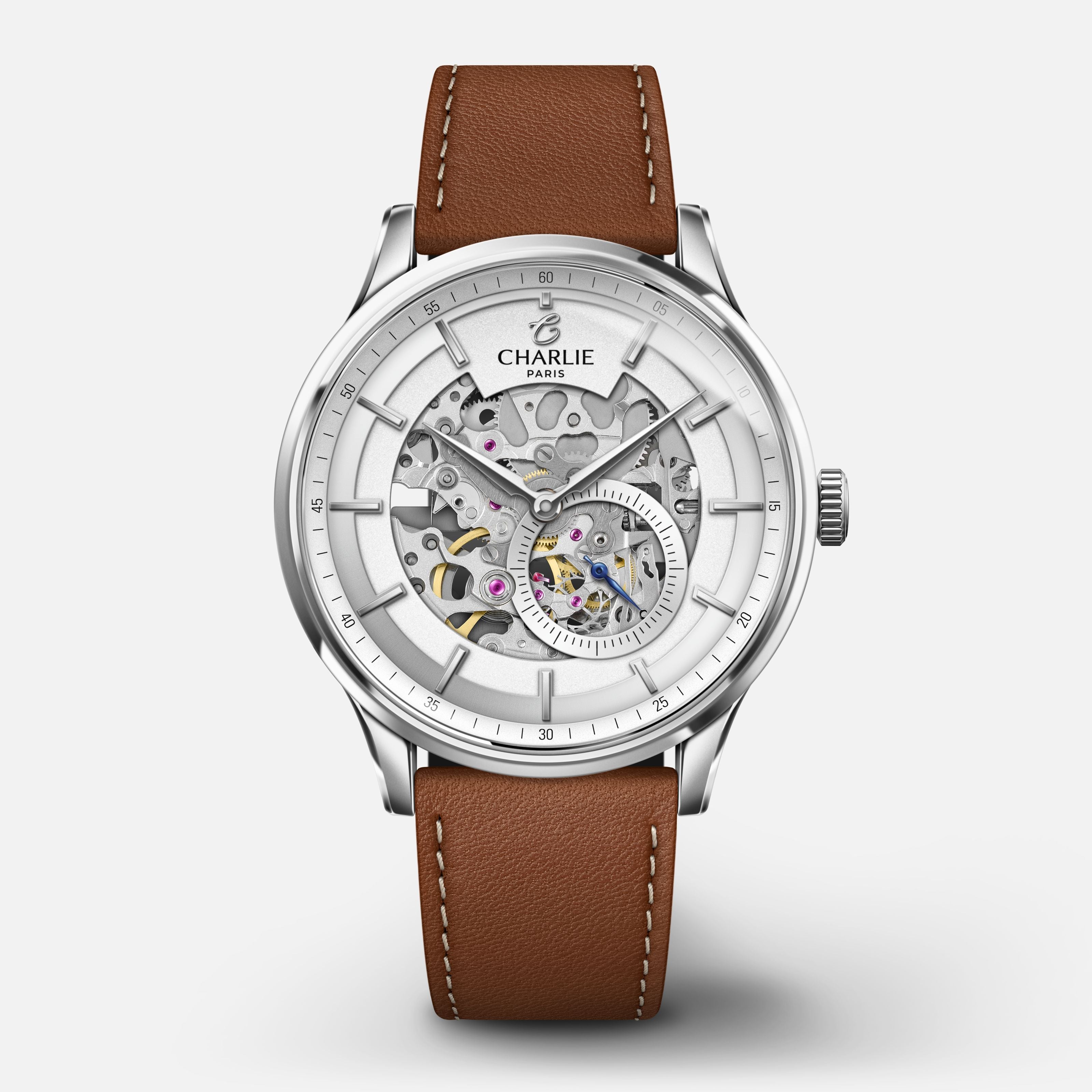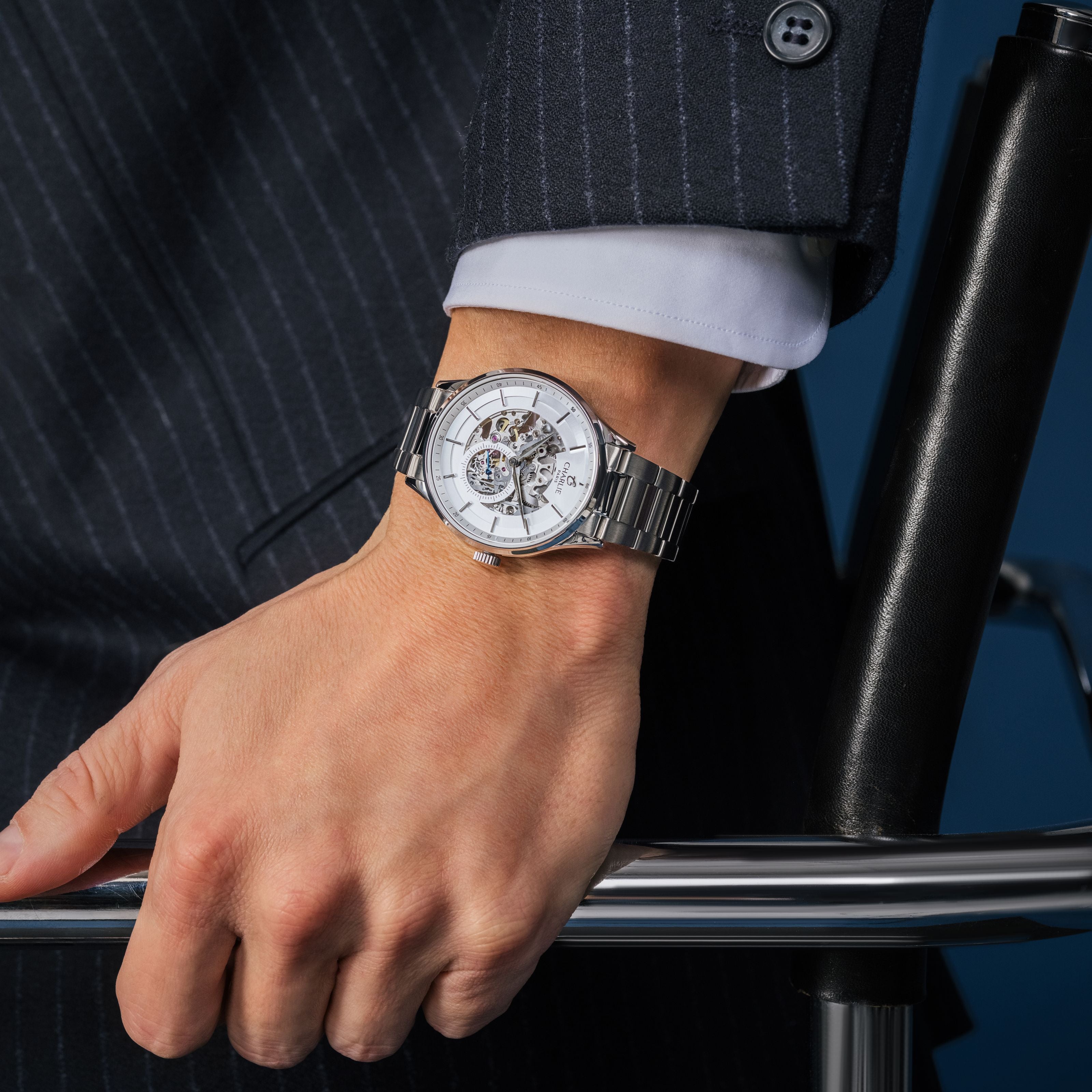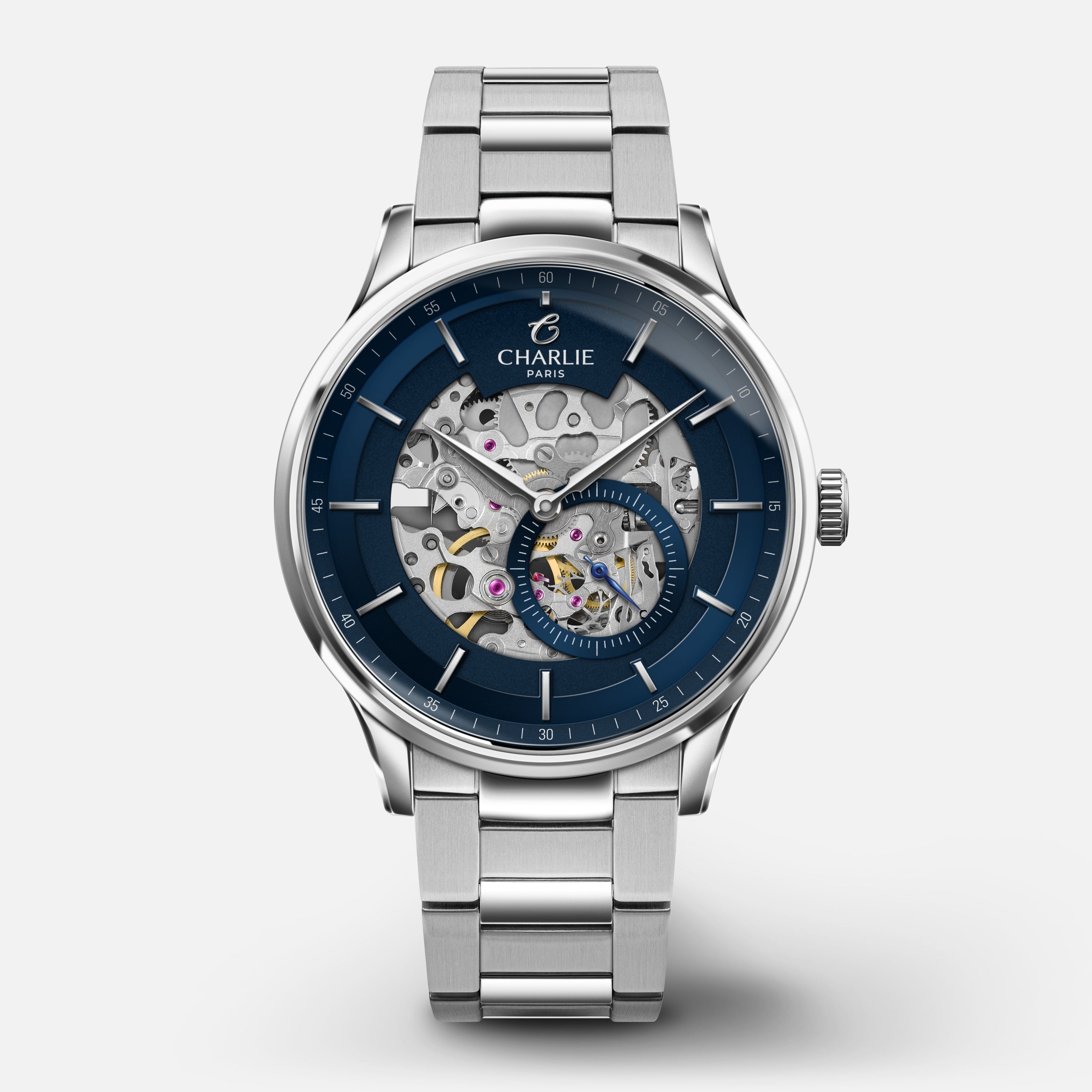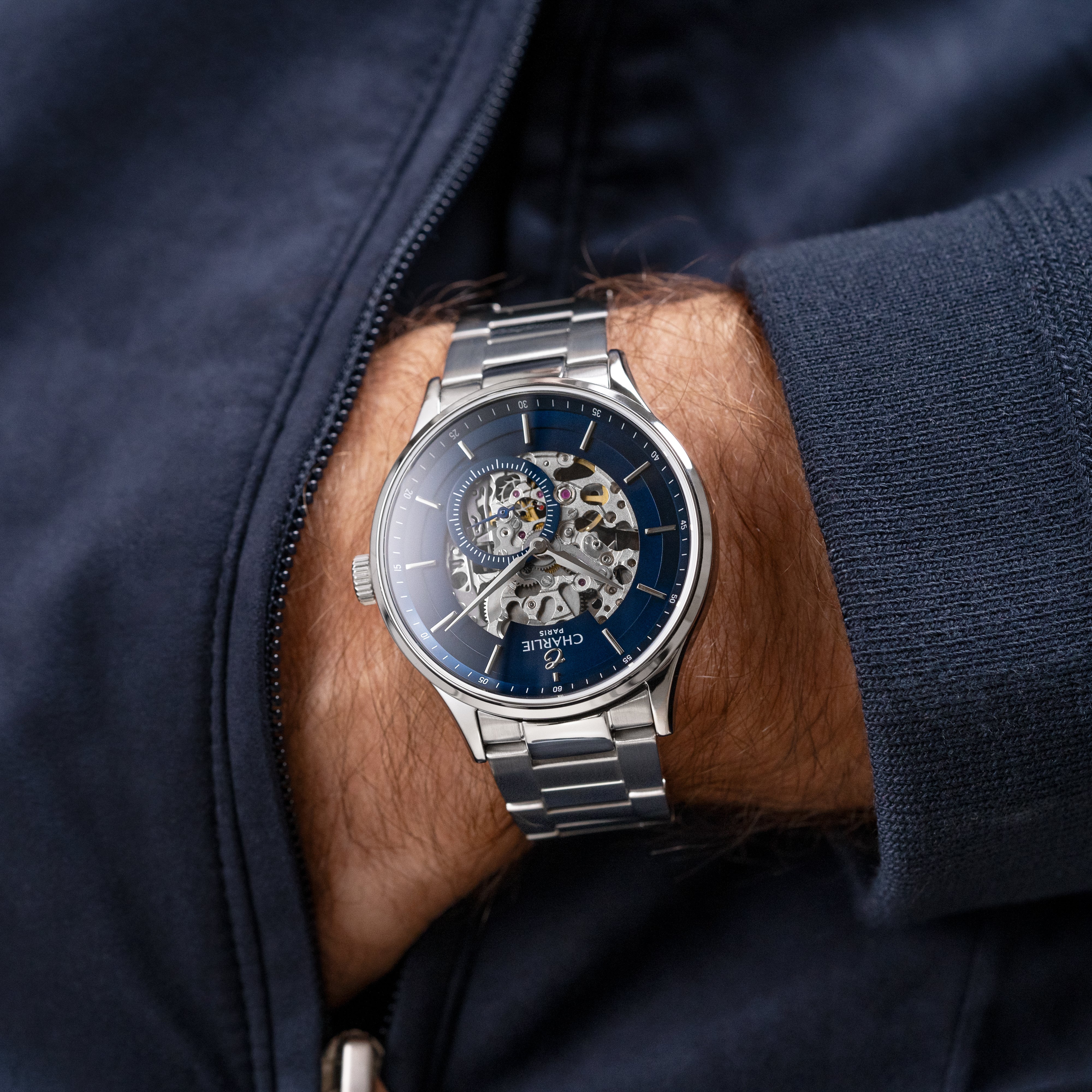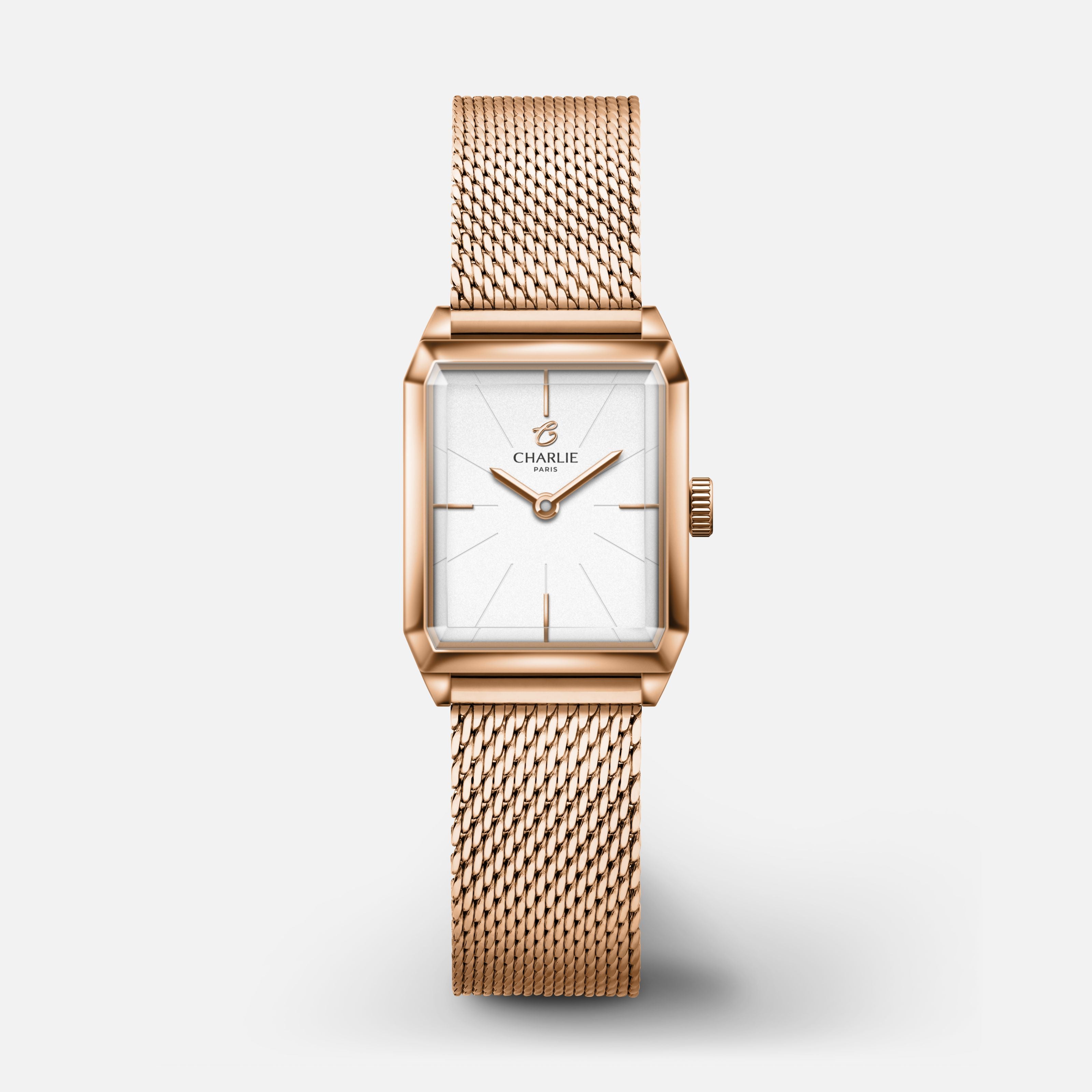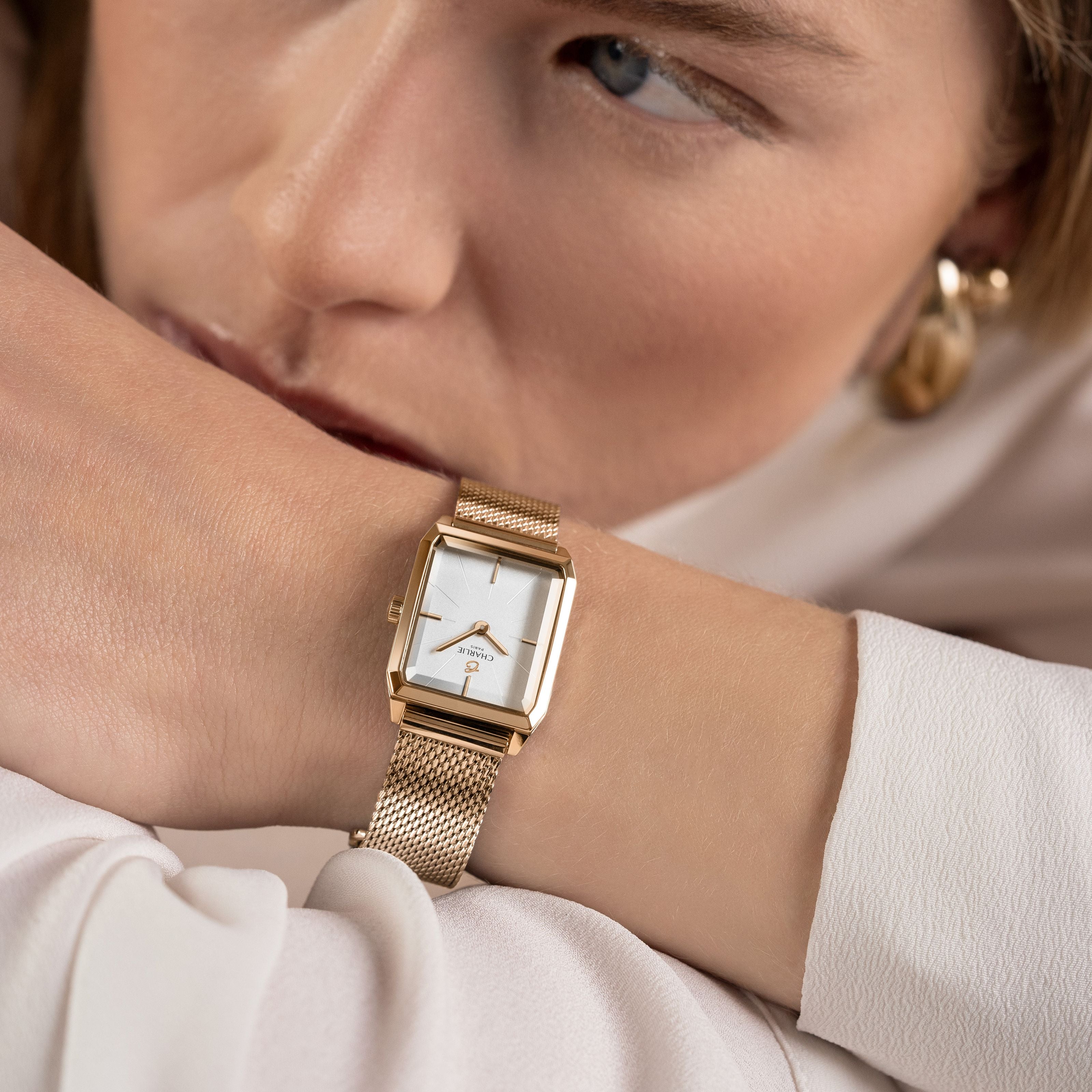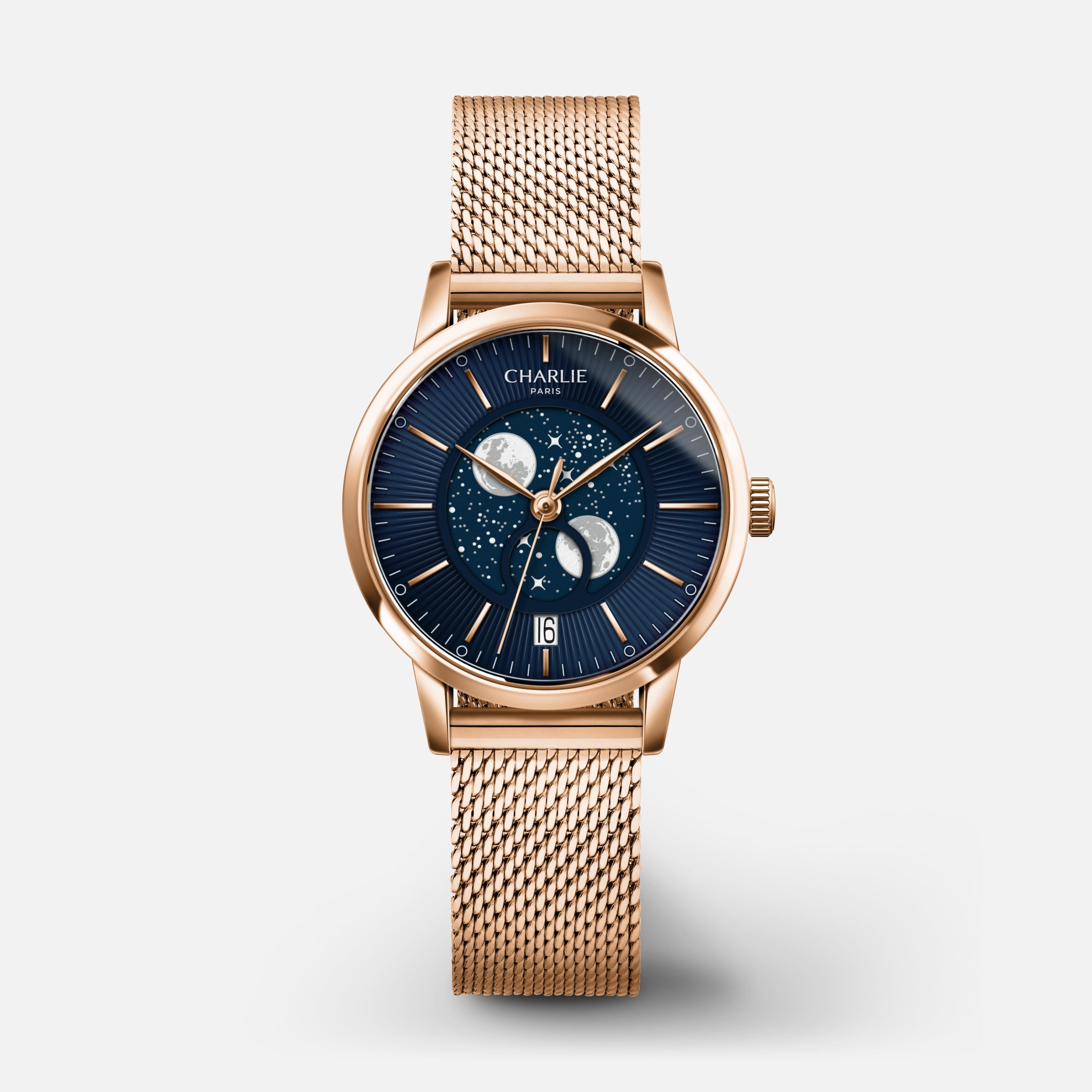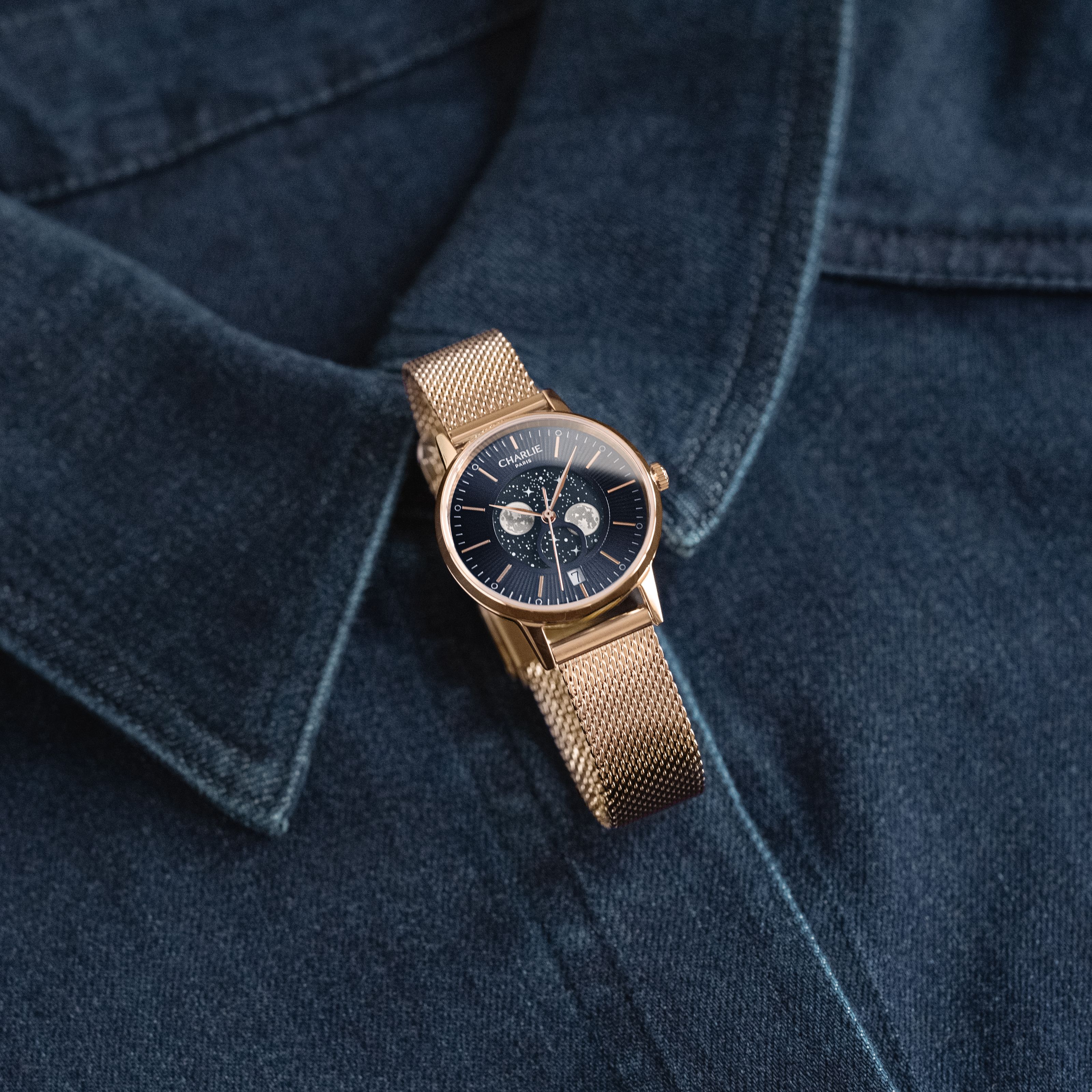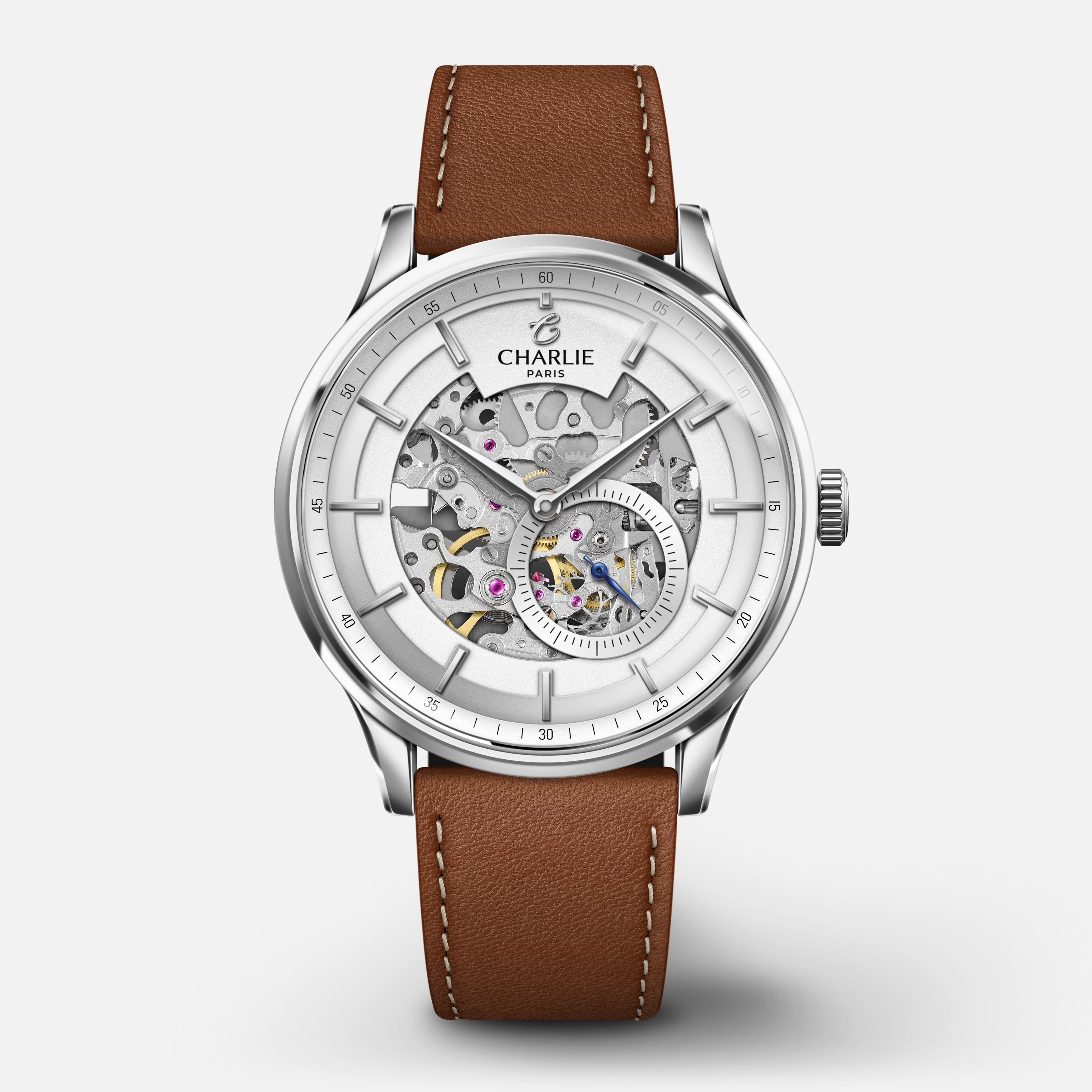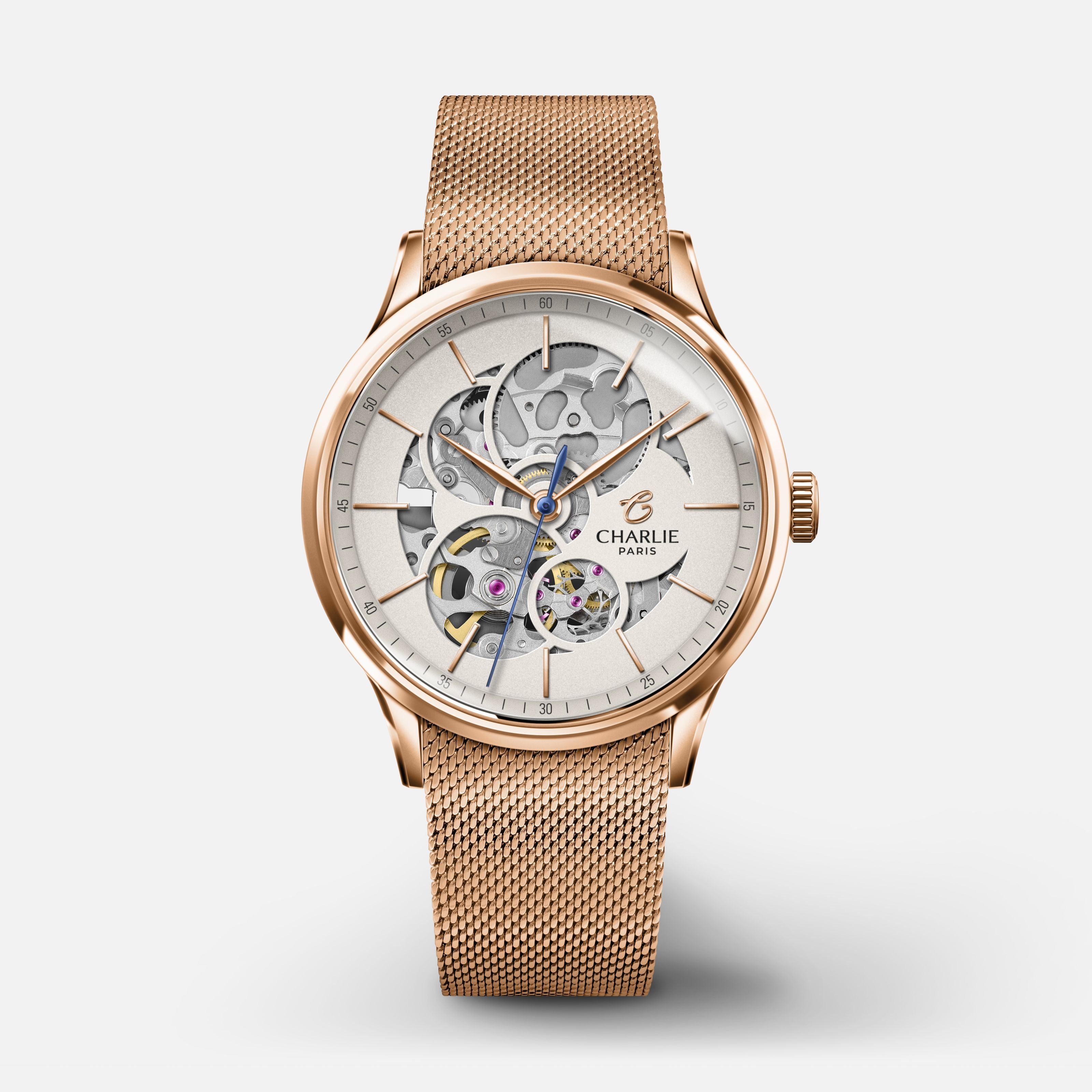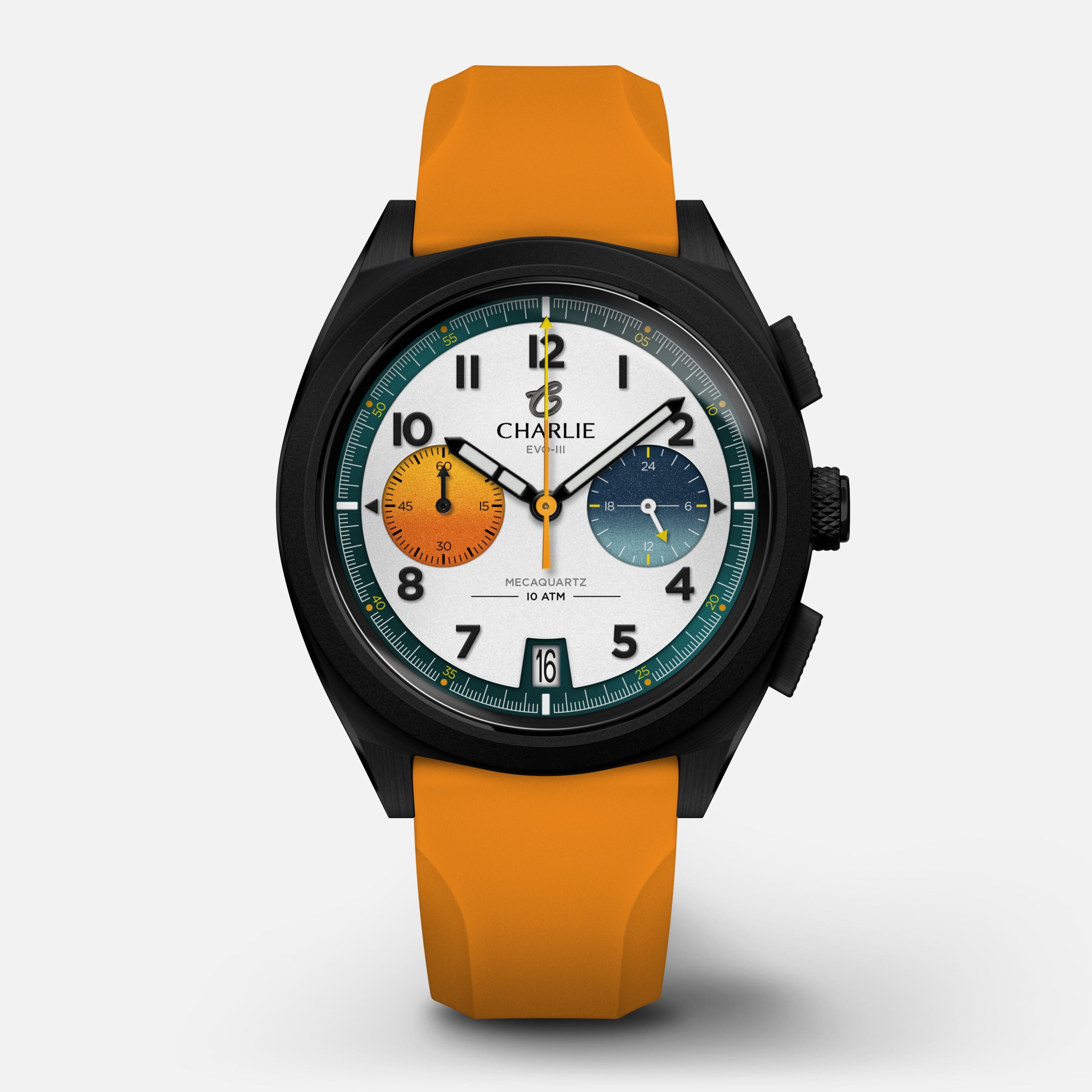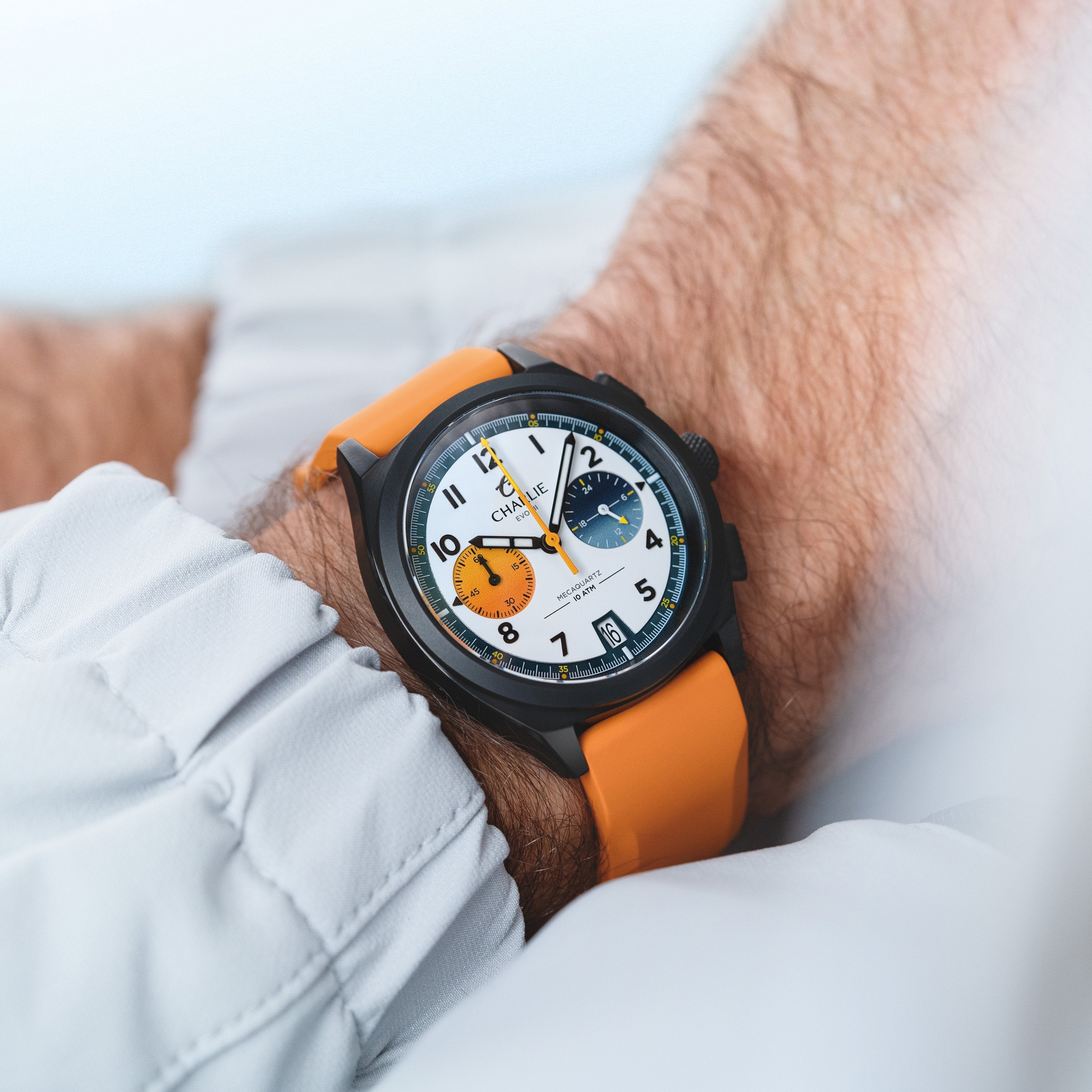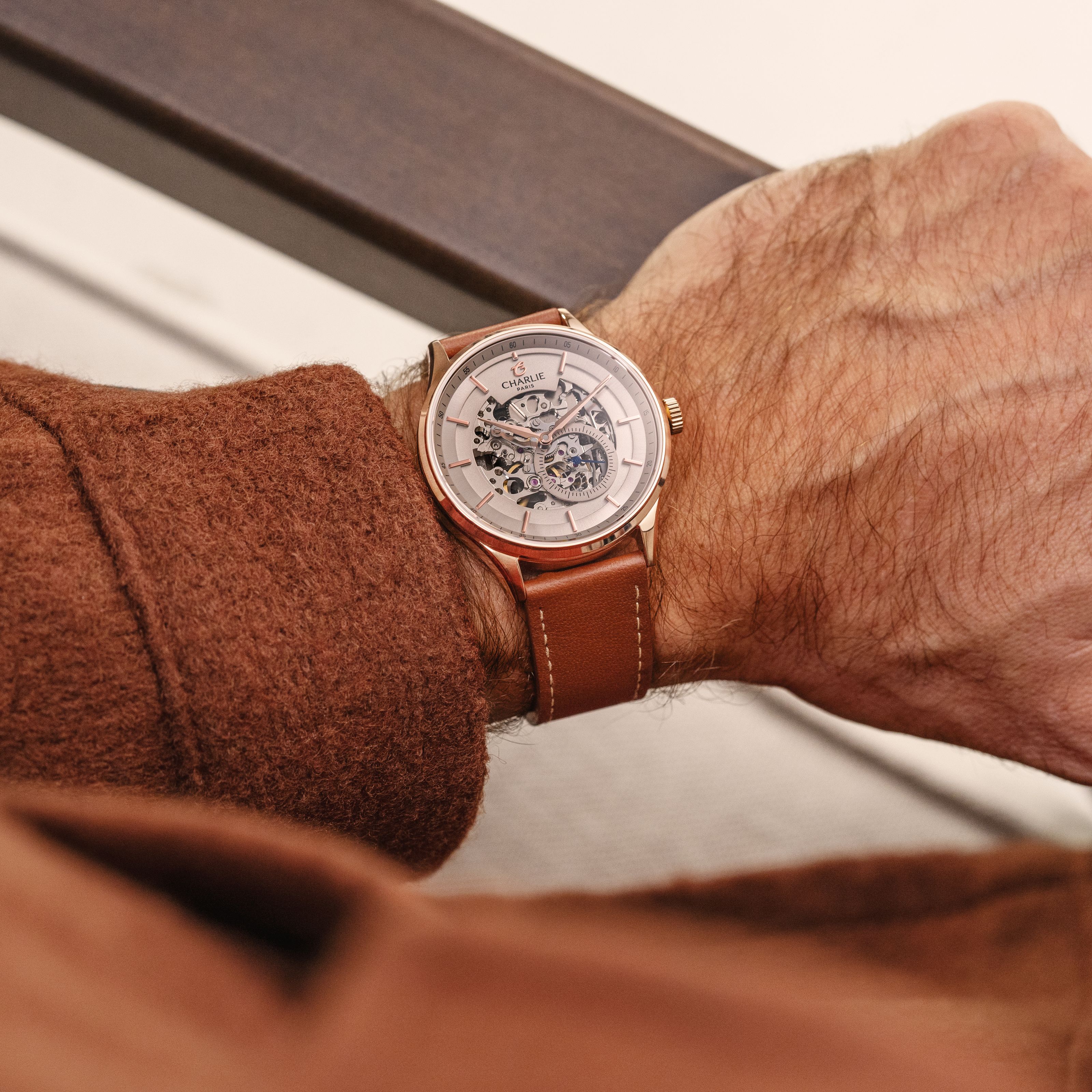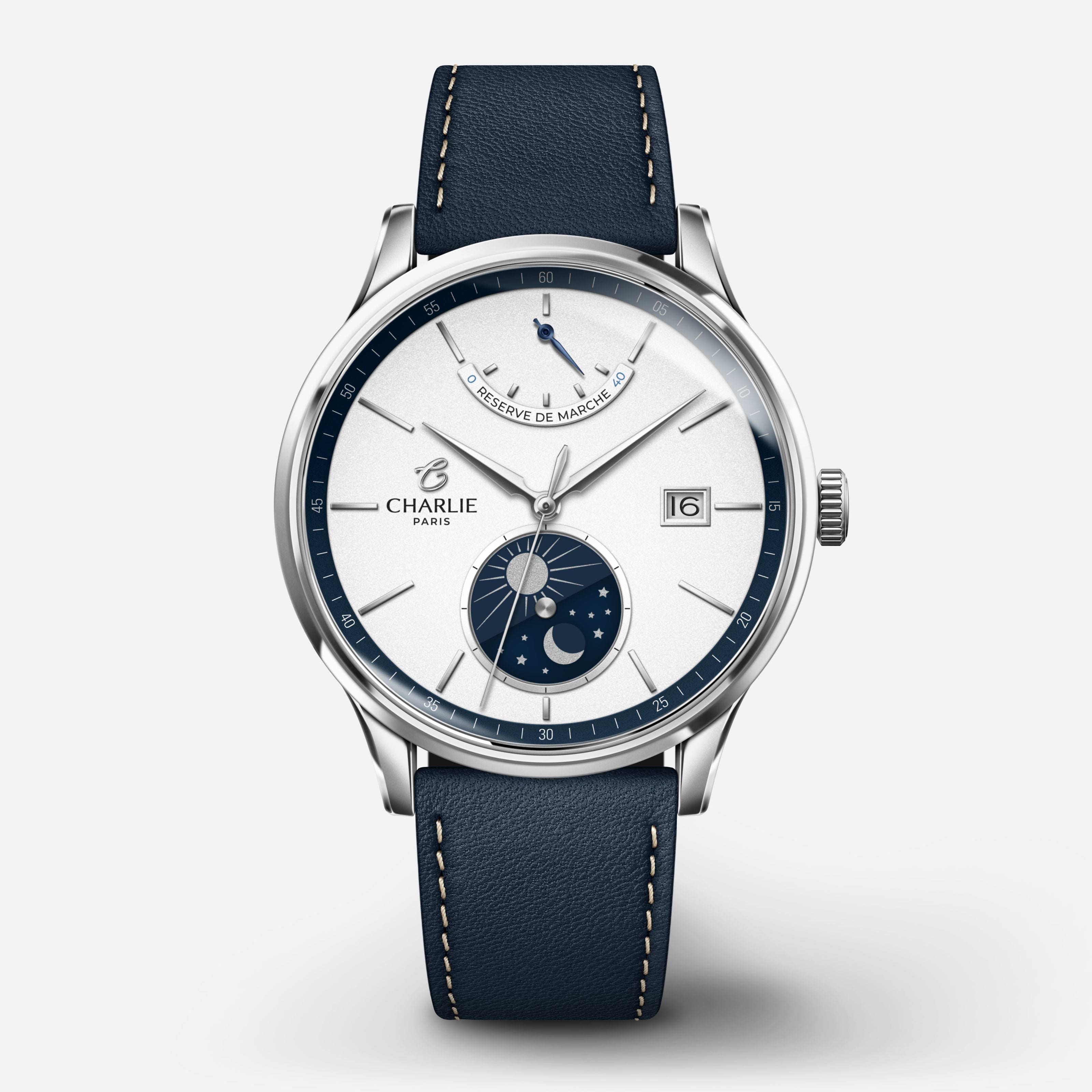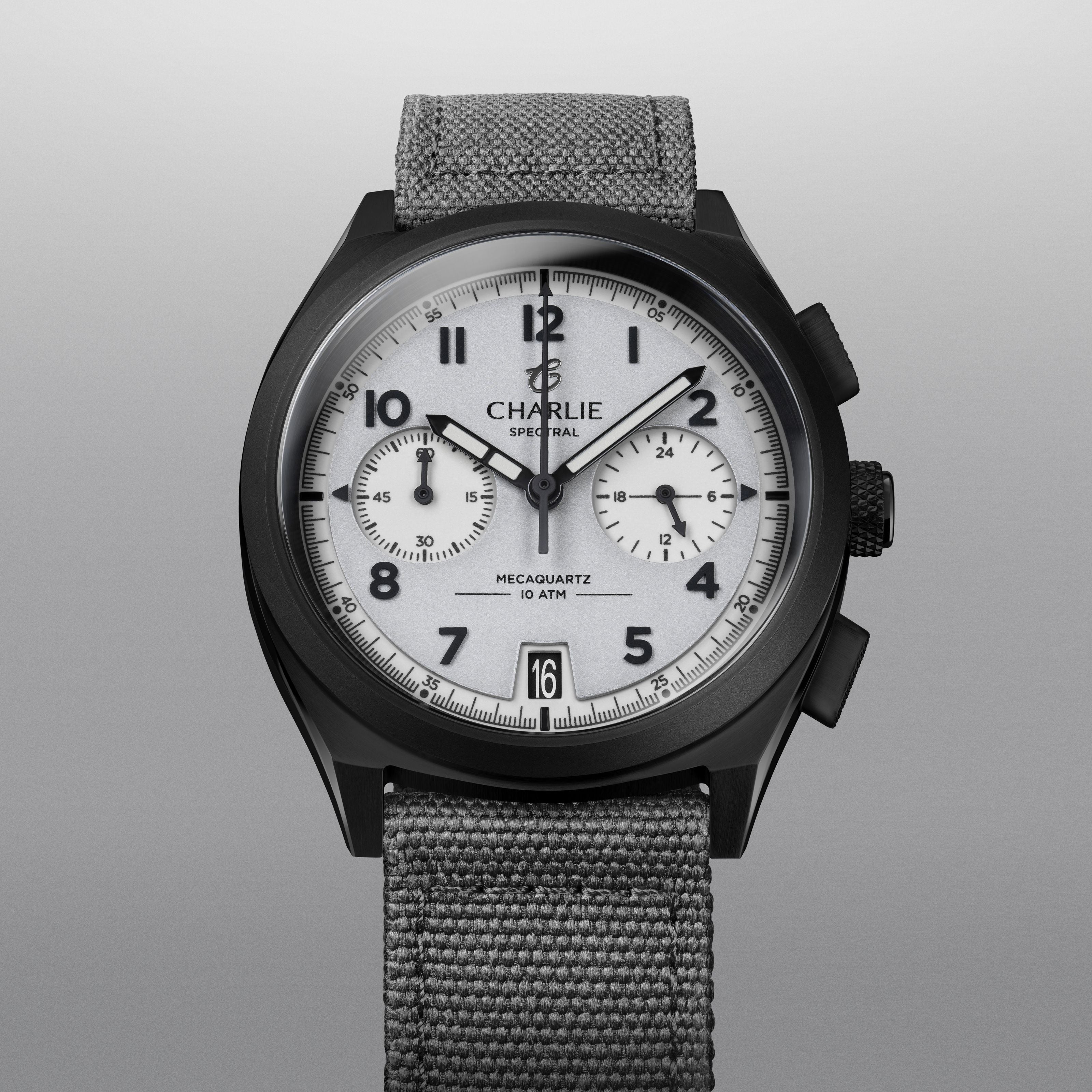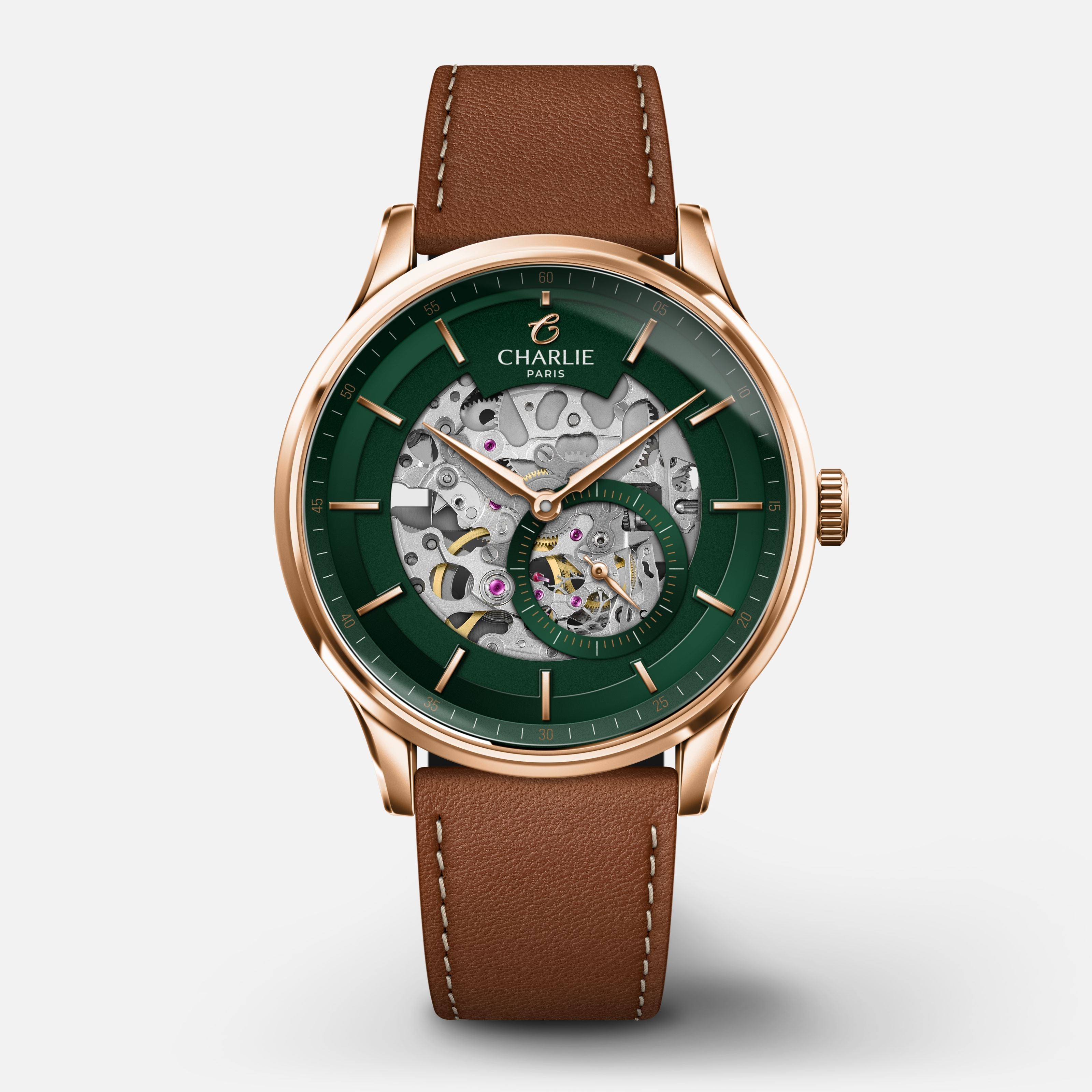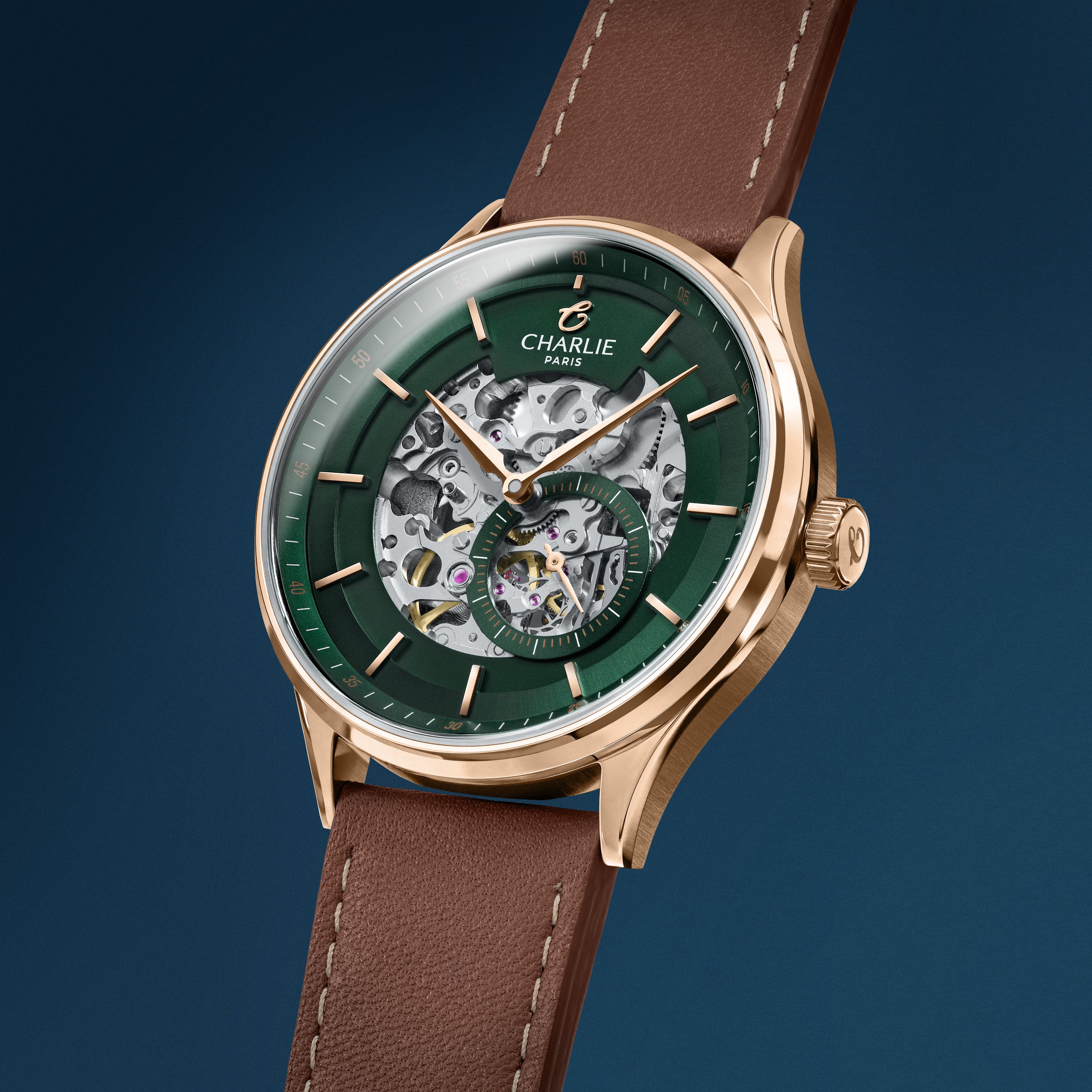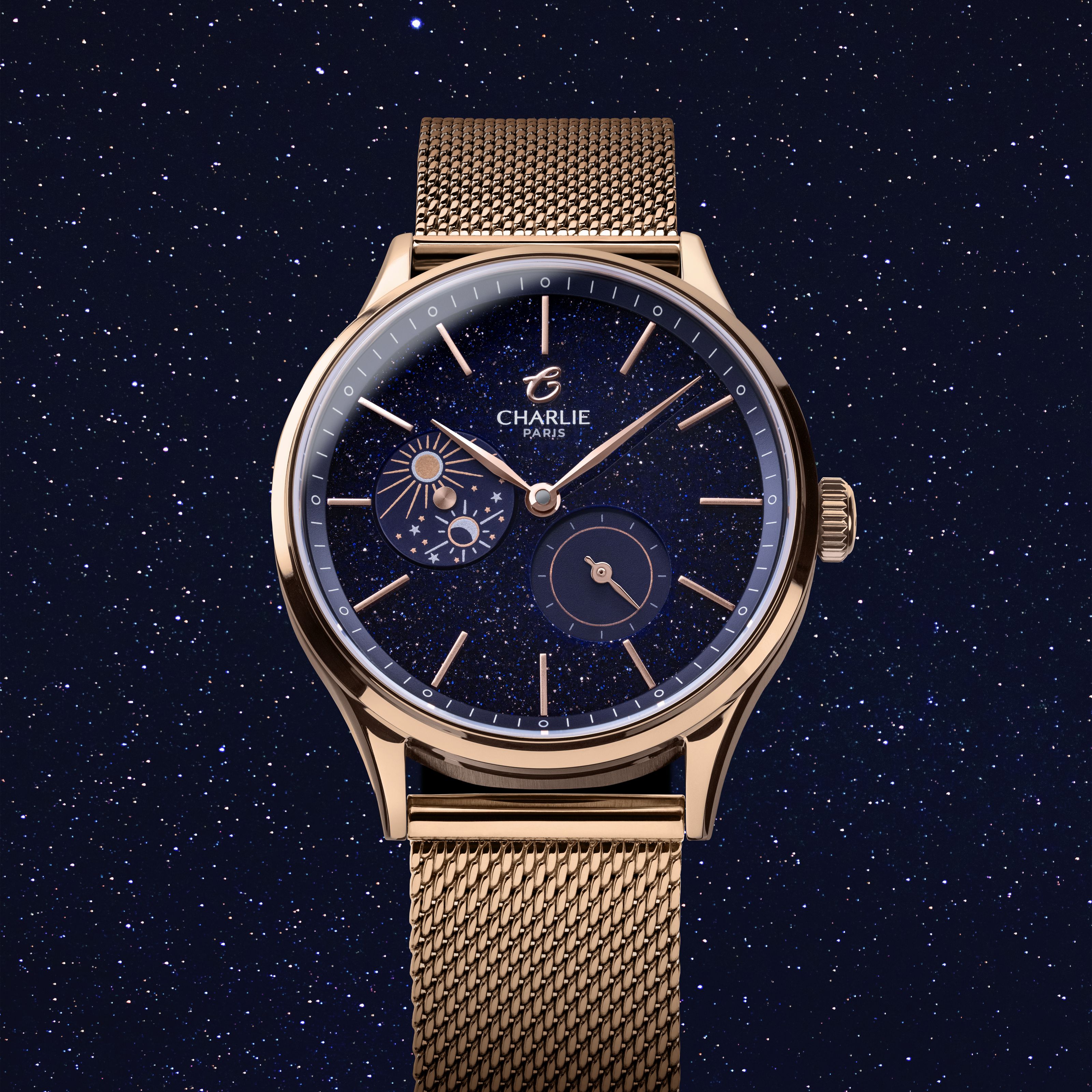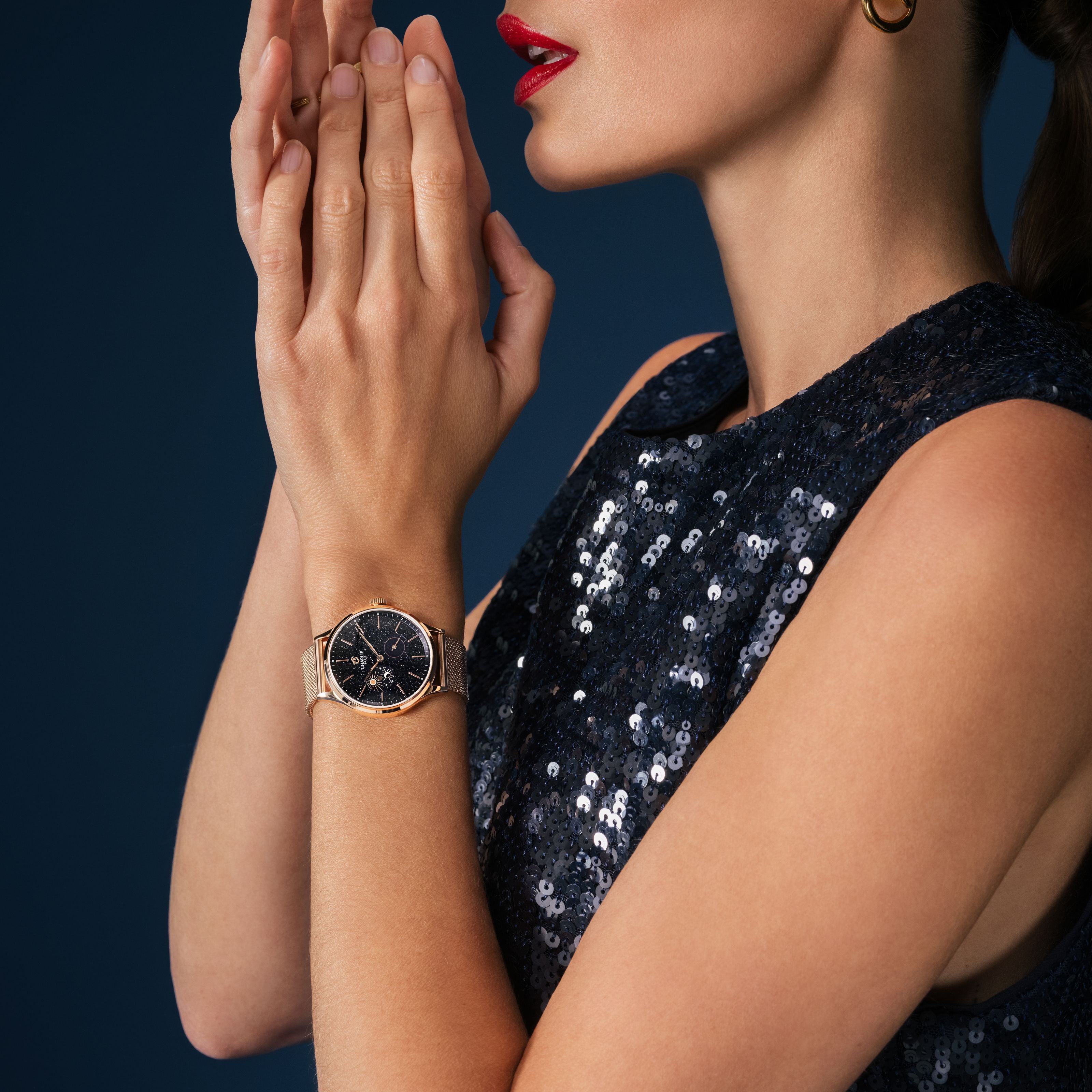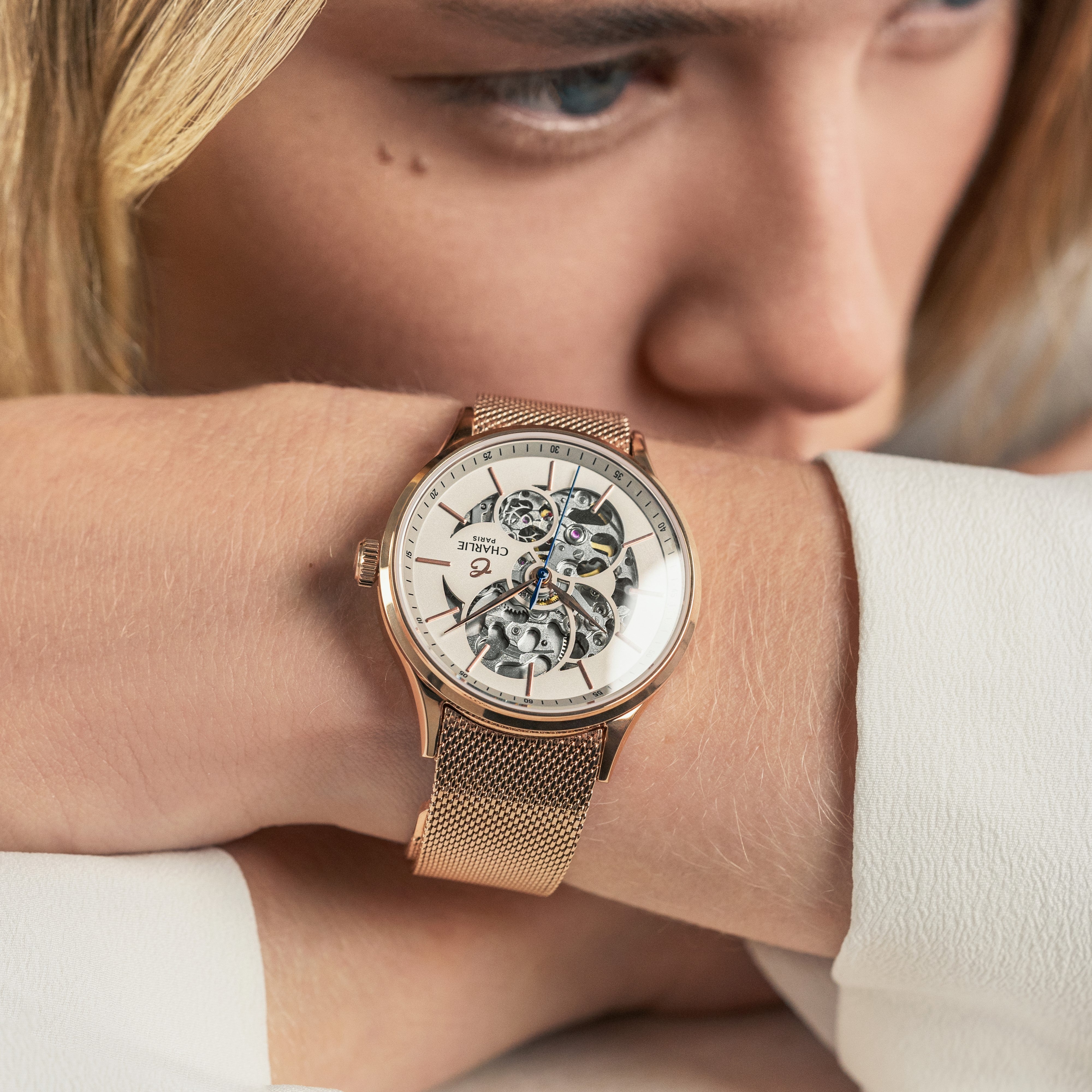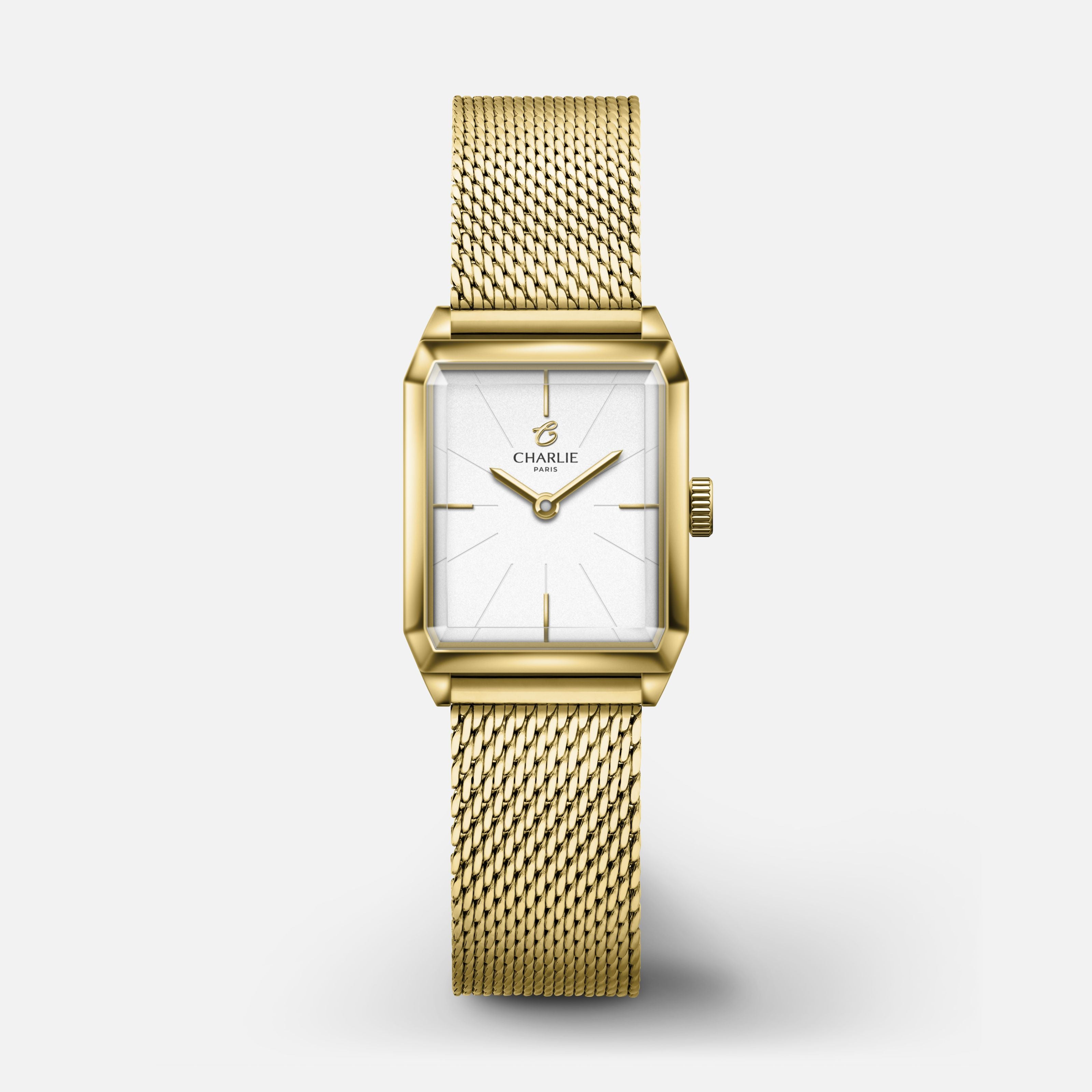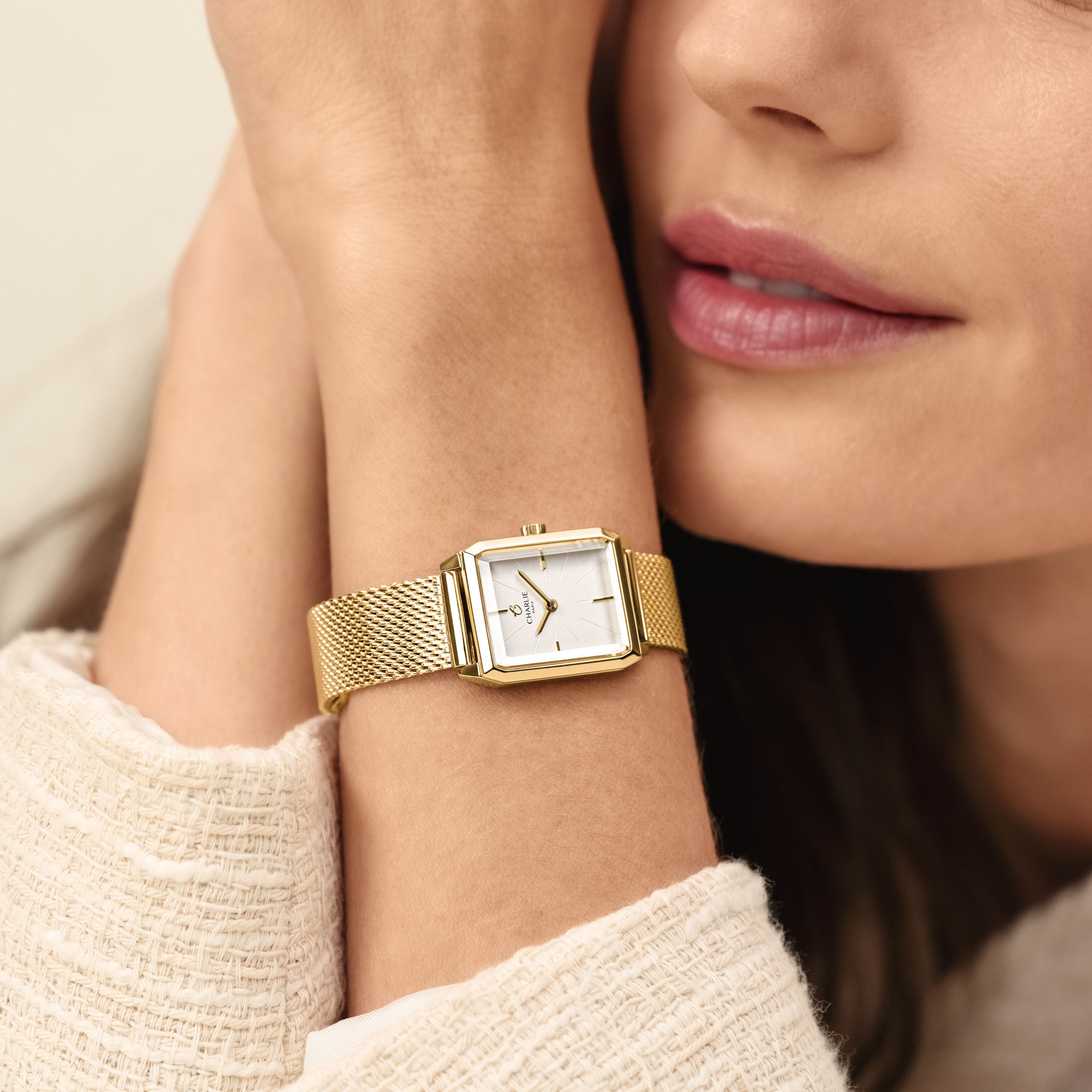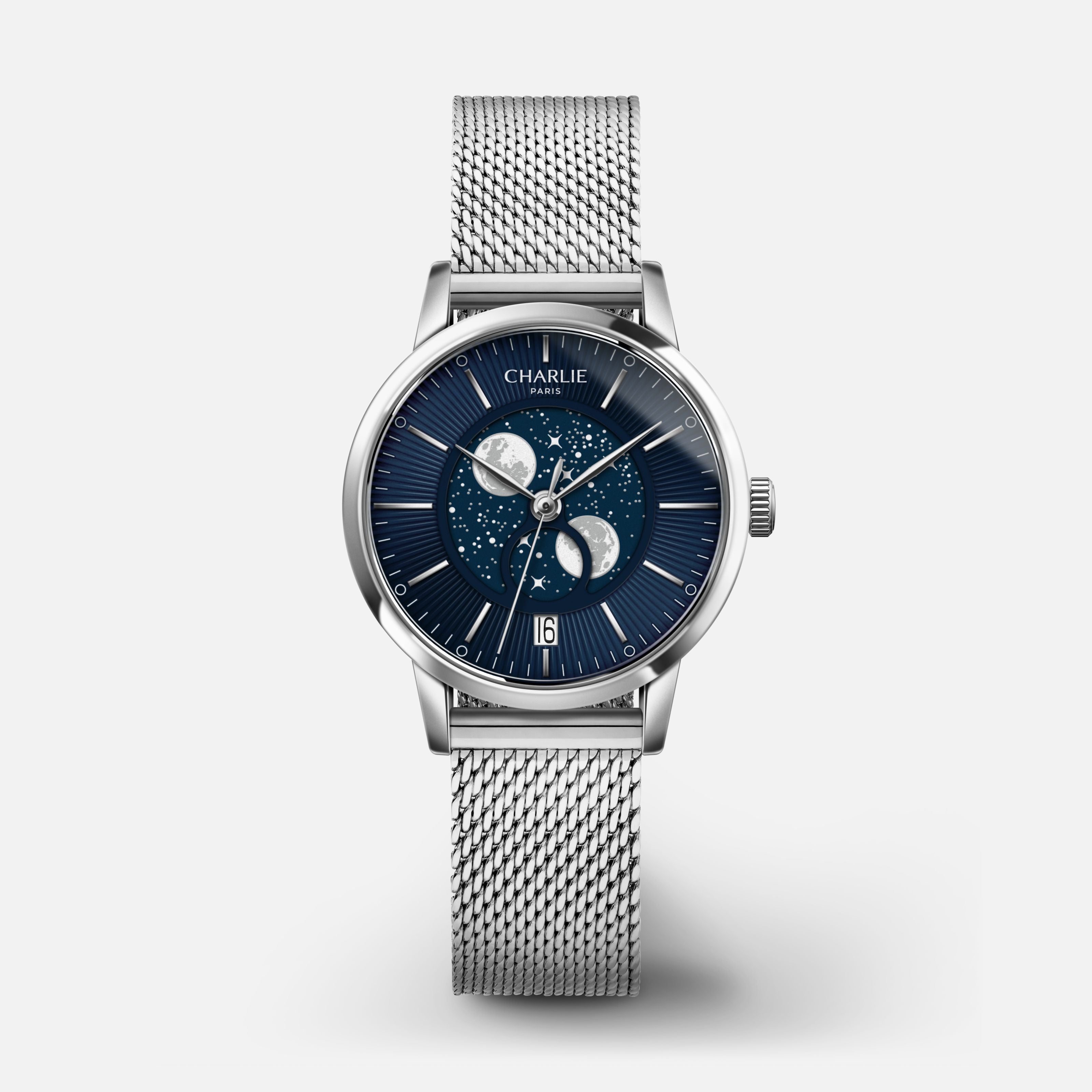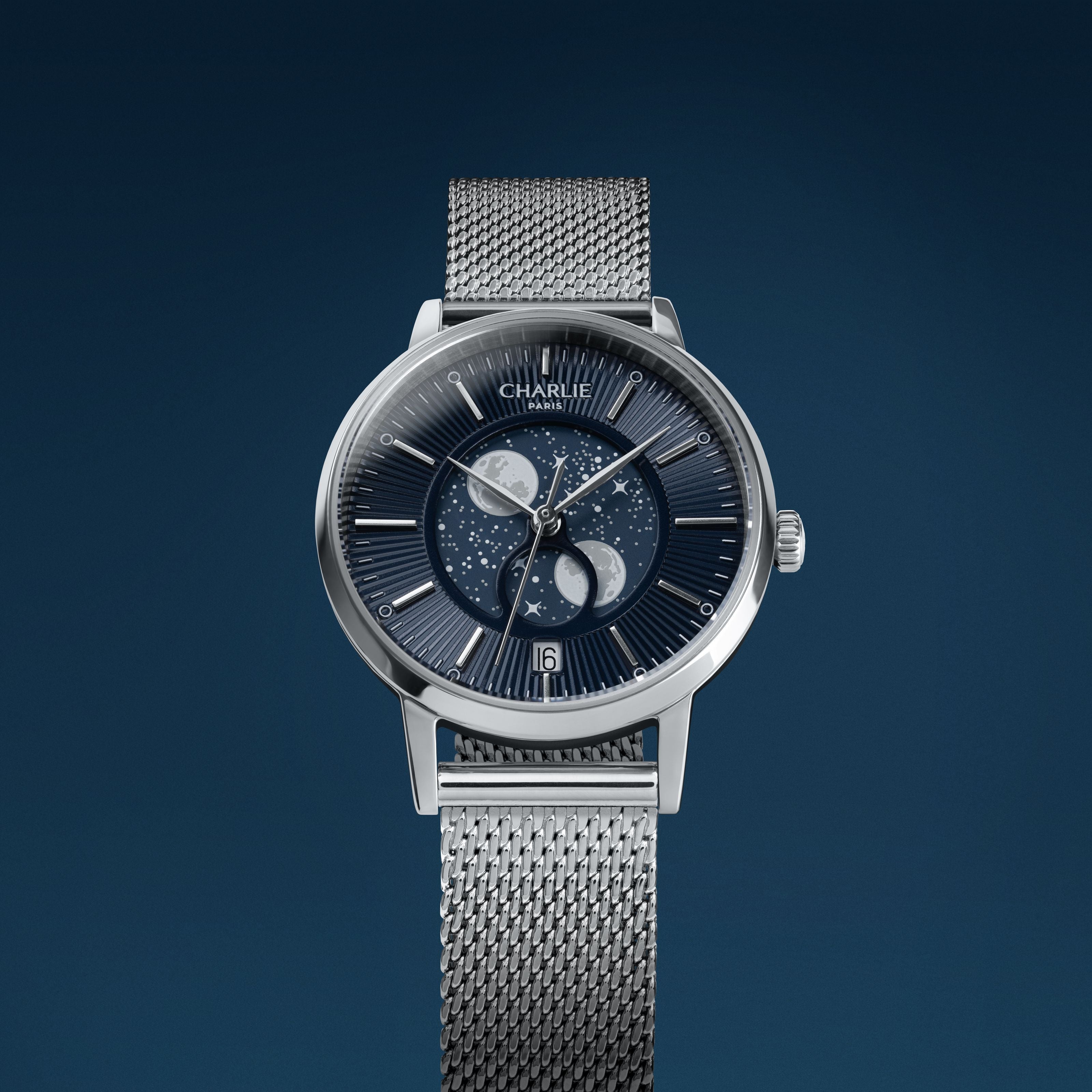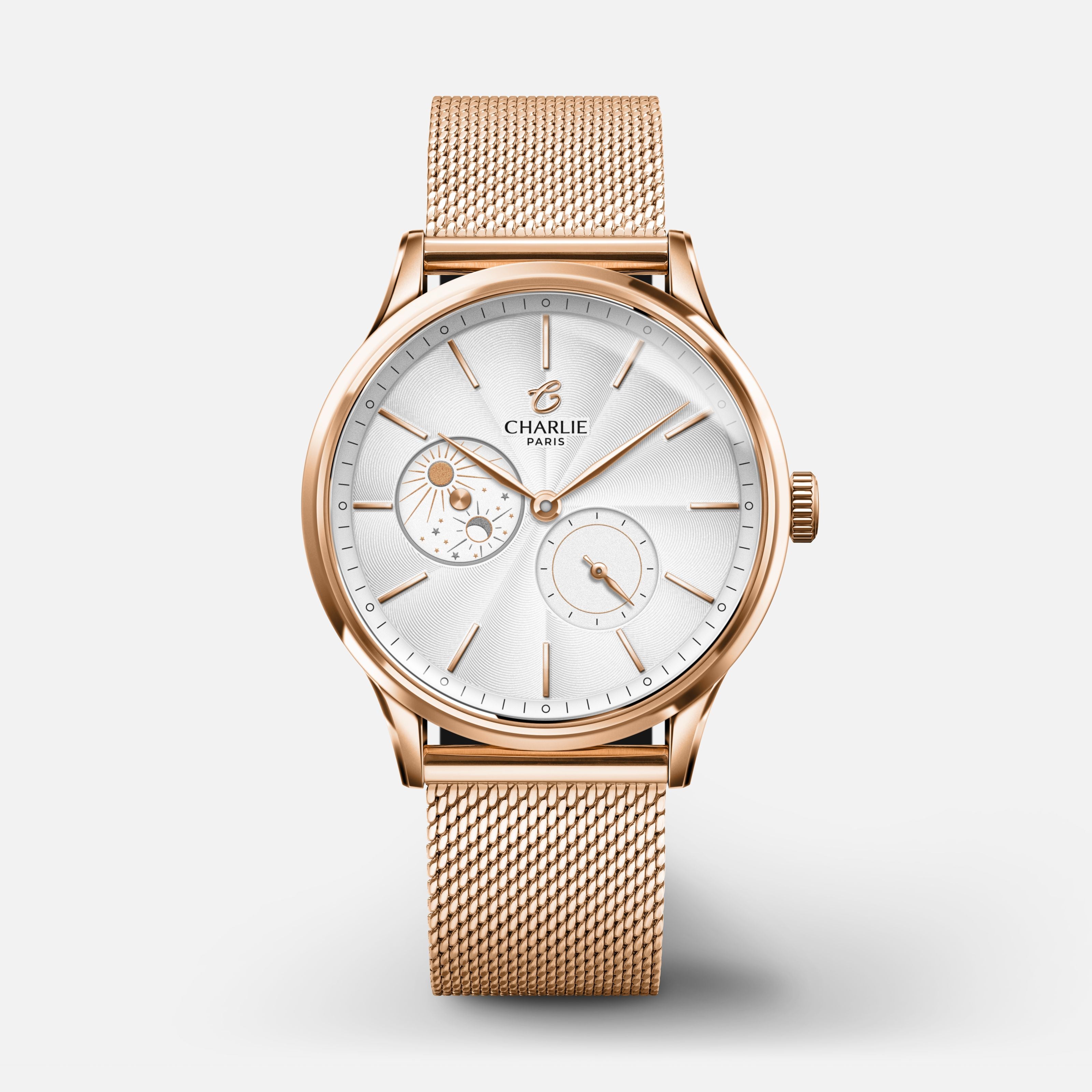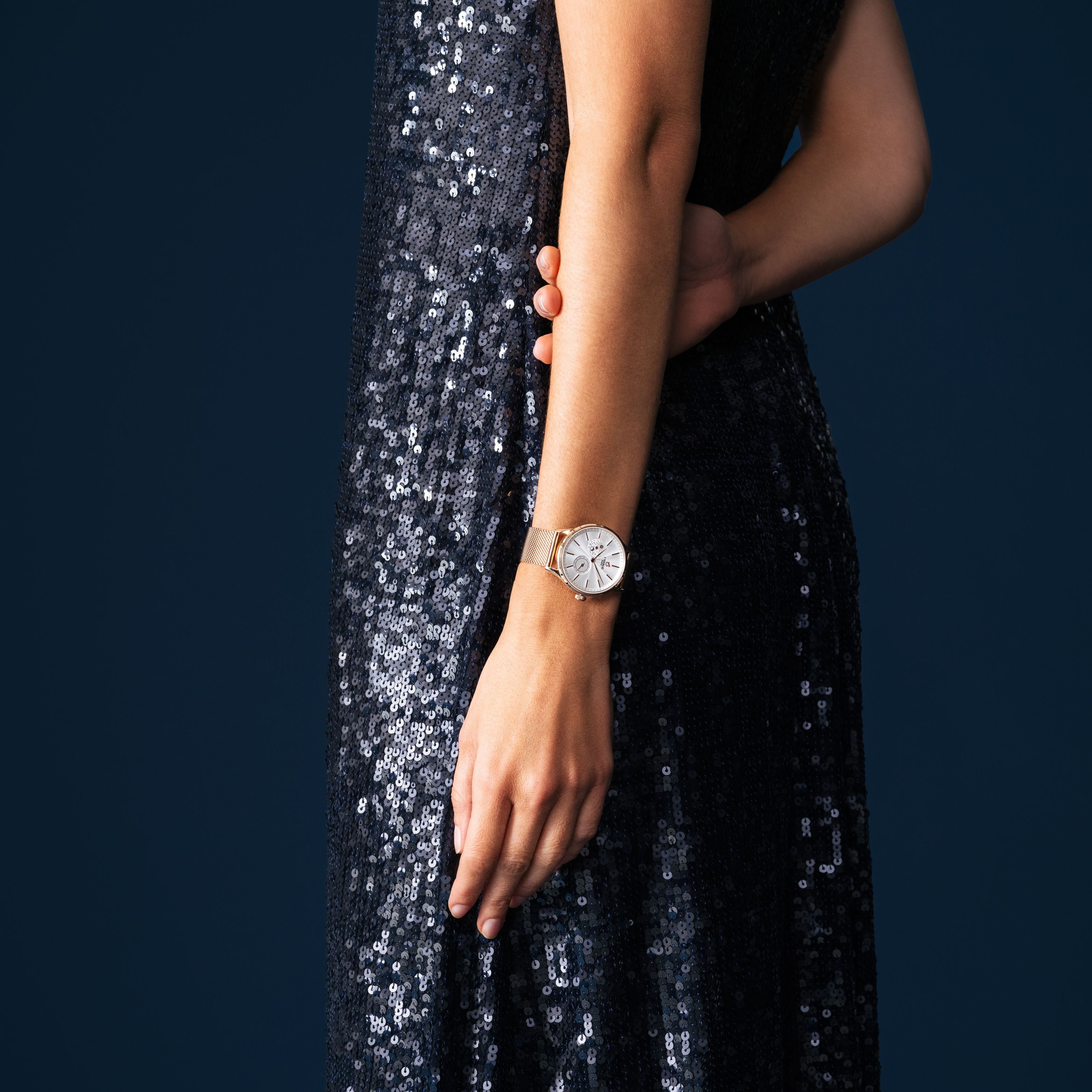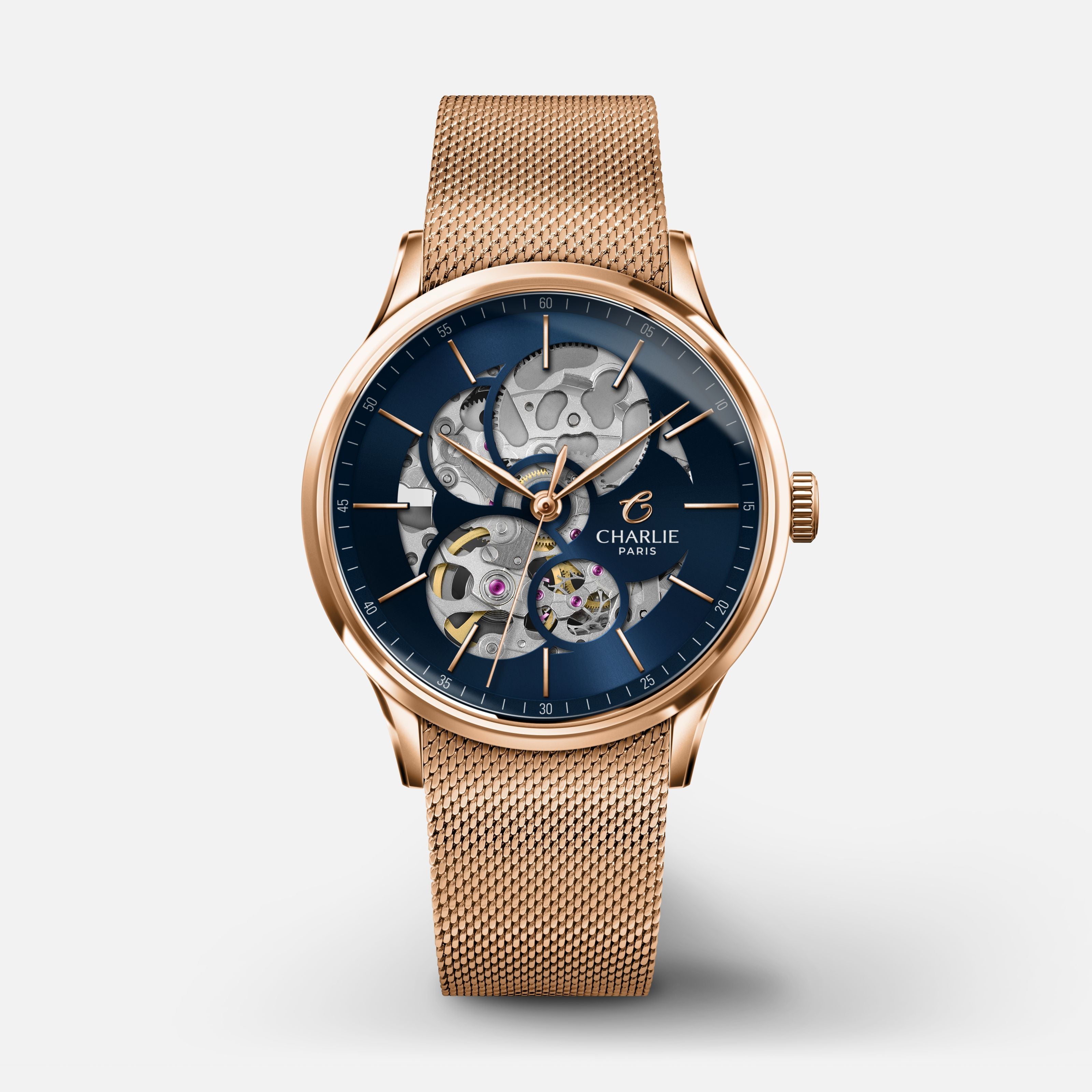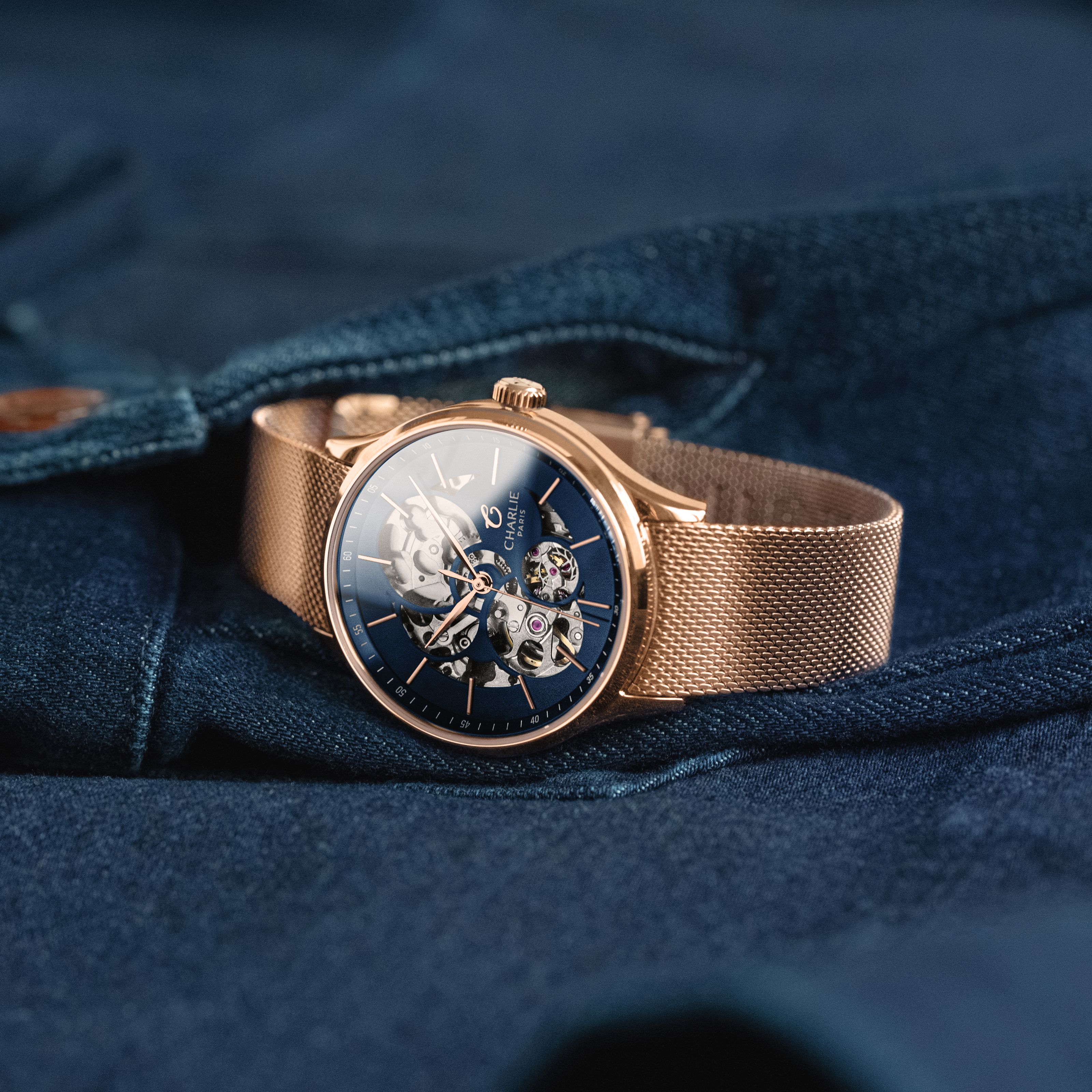Looking for a steel watch? Charlie Paris offers French watches with steel bracelets, and for all our watch cases, we use 316L steel, a steel that resists corrosion. But what is 316L steel? What are its characteristics? In this article, the Charlie Paris Team will introduce you to 316L steel and its characteristics.
316L Steel, Stainless Steel, Steel, what are the differences?
Steel is a metal alloy made primarily of iron and carbon. Adding carbon at a rate of 0.02% to 2% transforms iron into steel, making it even stronger but also giving it a certain "flexibility," which is why steel is widely used for construction. At this stage, steel (and 316L steel) is not a stainless alloy. Beyond 3% carbon, iron becomes cast iron, but this large amount of carbon makes this metal very hard but also brittle.
- Steel, an oxidizable alloy: Raw steel is an oxidizable alloy. It will naturally bond with oxygen molecules present in the air or water through oxidation-reduction reactions. This reaction is more commonly called "corrosion." These reactions result in the appearance of iron oxide and hydroxide, also called rust, the famous orange-red substance found on certain iron structures. Rust is a destructive agent that gradually consumes steel until it completely decomposes.
- From steel to stainless steel: Strauss and Maurer, two German chemists, filed a patent in 1912 to exploit the first stainless steel, a clever mixture of steel and chromium (whose discovery, dating from 1797, is attributed to the Frenchman) Nicolas Louis Vauquelin) and nickel (discovered in 1751 by Axel Frederik Cronstedt), which makes the steel very resistant to corrosion and prevents it from rusting. The chromium content of stainless steel is at least 10.5%, its Carbon content must be less than 1.2% and its Nickel content approximately 8%. There are 3 categories of stainless steel: ferritic, martensitic and austenitic stainless steels.
- 316 steel and 316L steel: 316L steel is a type of austenitic stainless steel with a carbon content of no more than 0.02%, a chromium content of around 17% and a nickel content of 10 to 12.5%. 2 to 2.5% of molybdenum is added to this alloy. The L in the abbreviation 316L means that it is a "low carbon" steel. As mentioned previously, this steel contains only 0.02% carbon compared to 0.05% for "classic" 316 steel. When welding at very high temperatures, a substance called "chromium carbide precipitation" is created and therefore the steel, although stainless, becomes more prone to corrosion. Having a minimum of carbon in the structure of this alloy prevents the creation of this precipitation and therefore 316L steel is not subject to corrosion. Molybdenum, discovered in 1778 by Carl Wilhelm Scheele, is added to stainless steel to form 316L steel. On the one hand, molybdenum hardens the alloy but above all makes it much more resistant to corrosion, even in extreme environments (chlorinated, salty, and acidic environments). This is why 316L steel is also used for outdoor uses such as guardrails or handrails.
 Why 316L steel in our watches?
Why 316L steel in our watches?
For all of our watches , We have chosen to work with 316L steel. As you will have understood, this alloy is known for its durability and also its high resistance to corrosion, two elements that we consider essential for our cases. From an aesthetic point of view, 316L steel is a stainless steel whose shine lasts over time and does not tarnish. Finally, it is very easily and completely recycled. Thus, stainless steel watches can have a new life. The commitment from an ecological point of view being part of the strong values at Charlie Paris, it was natural that we turned to this type of steel for our watches .
Read more
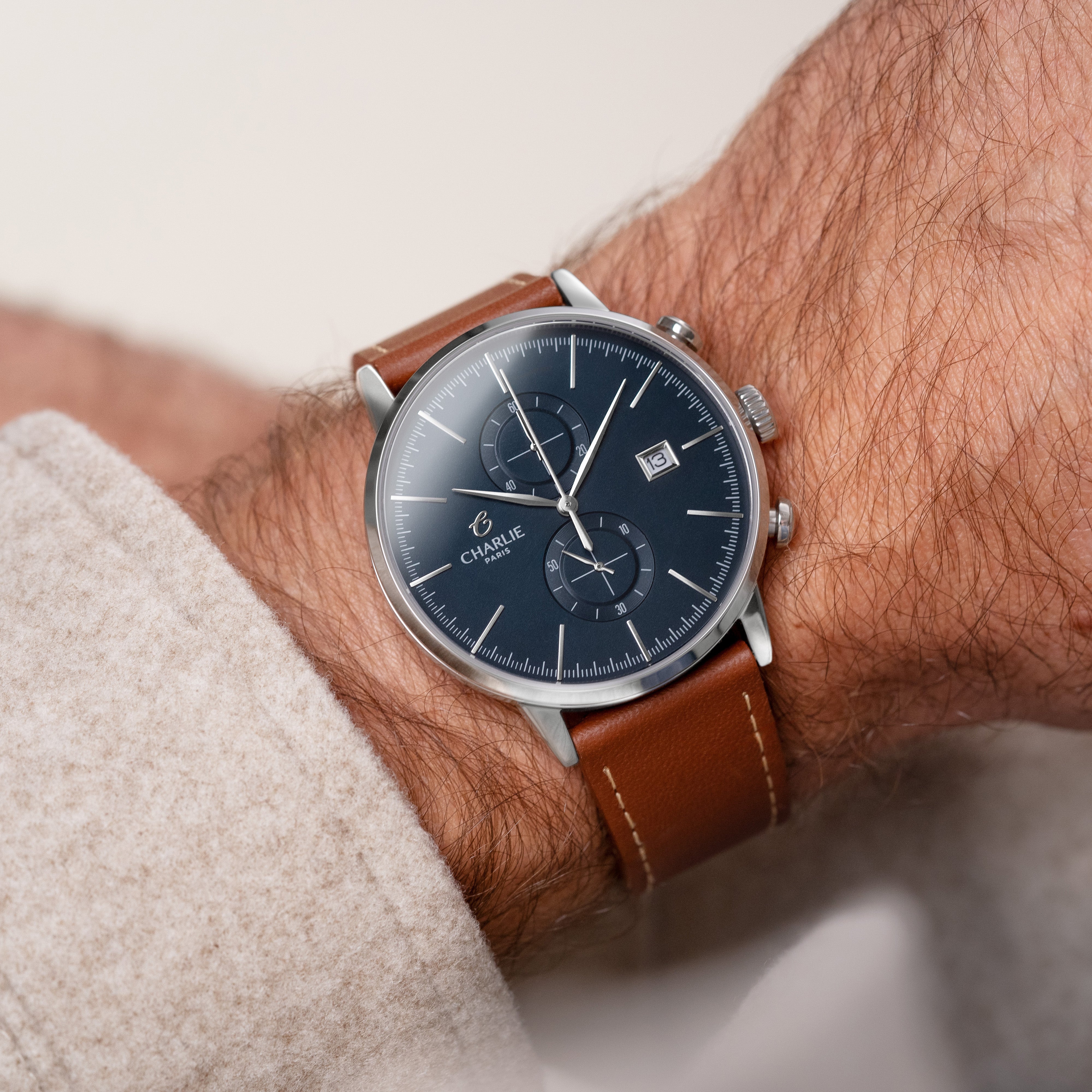
Watch the interview with our founder Adrien on the France 5 show “La Quotidienne” on the theme “Quality watches at low prices, it’s possible!”.
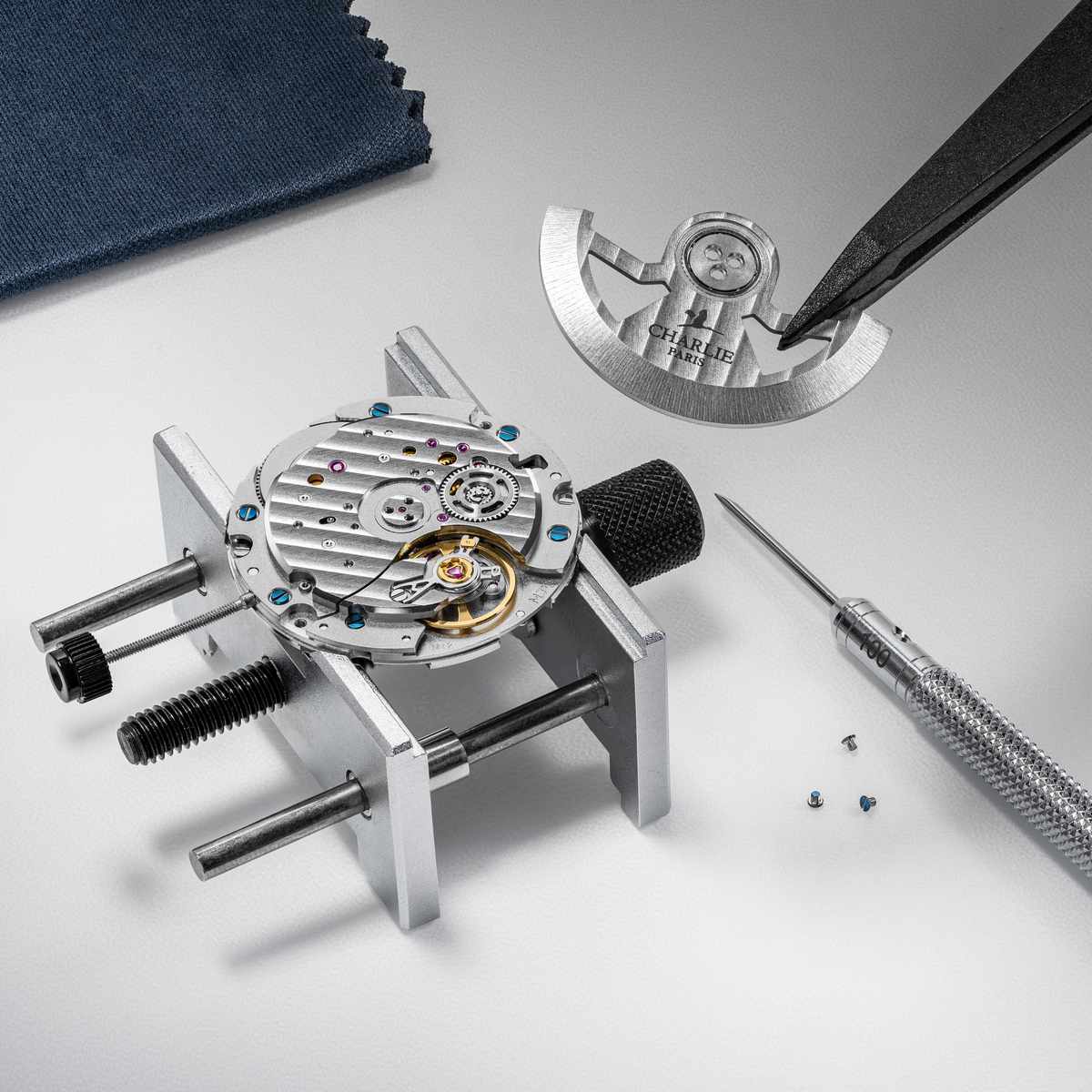
Automatic mechanical movements use wheels and springs to operate using kinetic energy. That is to say, the energy that a body possesses due to its movement.


